Matador Network's Blog, page 256
September 8, 2023
What To Know Before Planning an Everglades National Park Trip
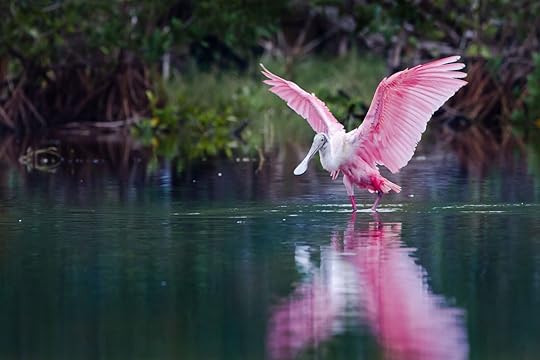
In southern Florida, you’ll find a sprawling 1.5 million-acre wilderness unlike anywhere else in the US. It’s Everglades National Park, and it’s home to an astonishing array of wildlife, including alligators, manatees, crocodiles, the elusive Florida panther, and more than 360 species of birds. It’s the largest subtropical wildernesses in the US and has the largest mangrove system in the western hemisphere. In Everglades, you can camp on raised platforms above alligators, see endangered manatees in the wild, and paddle through a biosphere reserve. It’s truly unlike anywhere else in the US.

Photo: DimaSid/Shutterstock
The best time to visit the Everglades is during the dry season, which typically runs from November to April. During this period, cooler temperatures and lower humidity levels make outdoor activities like hiking, birdwatching, and wildlife observation far more comfortable. Summer is less crowded, but that’s because it can be unbearably hot and muggy. Tours and ranger programs are also far more infrequent in the summer. Winter is technically the dry season, but rain is possible year-round.
Everglades National Park doesn’t require reservations like some busier national parks, but you should still save time at the gate by buying your entry pass in advance online. It’s $30 per car, or free with an America the Beautiful pass. If you decide to pay at the gate, have a credit card handy as cash isn’t accepted.
Here’s what to know about planning your first trip to the park, including where to go, the best wildlife and airboat tours in Everglades National Park, and where to stay in and around the unique natural treasure.
Jump to:Where is Everglades National Park?When did the everglades become a national park?What to do in Everglades National ParkThe best hikes in the parkThe best airboat tours in EvergladesCamping in Everglades National ParkNearby hotels and resortsWhere is Everglades National Park?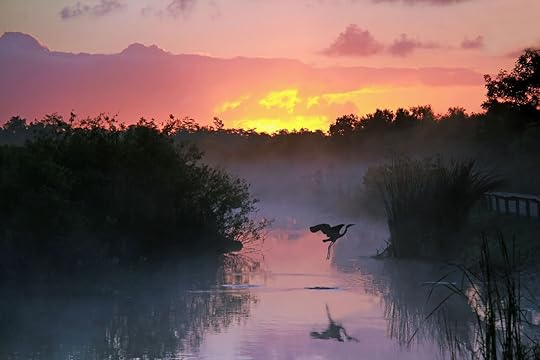
Photo: Brian Lassenby/Shutterstock
Everglades National Park is located in the southern part Florida, covering a large portion of the southern tip of the Florida peninsula. It extends from just south of Miami and stretches southwest towards the Gulf of Mexico. The park is roughly bordered by the cities of Homestead and Florida City to the east, Naples and Marco Island to the west, and Everglades City to the northwest. It encompasses a vast and unique ecosystem, including wetlands, mangroves, sawgrass prairies, and various waterways, making it one of the most ecologically diverse national parks in the United States.
Everglades is about 45 miles south of downtown Miami, so the best way to get there is to fly into Miami International Airport and rent a car. The park has three entrances (Miami, Homestead, and Everglades City), which aren’t connected. You’ll need a car since it’s a long drive to get to various sections of the park and there’s no public transportation. The Homestead Entrance is the main entrance and has the largest visitors center.
When did the Everglades become a national park?
Photo: Anthony Ricci/Shutterstock
Everglades National Park’s history dates back thousands of years when Indigenous peoples, including the Calusa and Seminole tribes, first inhabited the region. They lived off the land, relying on the abundant wildlife and plant resources of the area.
In the late 19th century and early 20th century, the Florida Everglades faced increasing threats from agricultural development and drainage projects. Efforts to reclaim land for agriculture and urban development led to the destruction of vast swaths of the Everglades ecosystem, which prompted conservationists and environmentalists to advocate for the protection of this fragile and essential wilderness. One of the most famous of these advocates was Marjory Stoneman Douglas, for whom the park’s wilderness area is named.
Thanks in part to successful lobbying and media attention, on December 6, 1947, Everglades National Park was established, becoming the first national park dedicated to the preservation of a tropical ecosystem. It’s the third-largest park outside of Alaska and is also a UNESCO International Biosphere Reserve.
What to do in Everglades National Park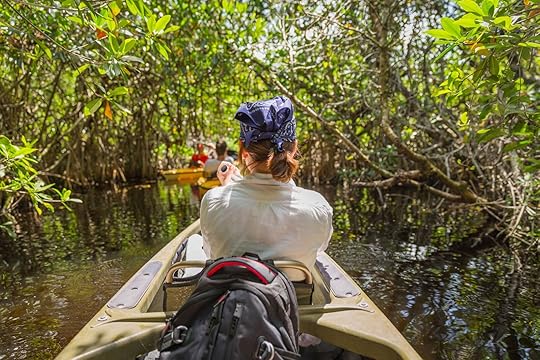
Photo: Mariakray/Shutterstock
The best things to do in Everglades National Park lean into the park’s wildlife and biodiversity, with opportunities to observe alligators, manatees, crocodiles, panthers, and numerous bird species in their natural habitat.
Airboat tours are extremely popular (recommendations below), as are canoeing and kayaking tours along the park’s hundreds of miles of waterways. You can rent kayaks within the park from Flamingo Adventures or Everglades Florida Adventures and choose your own adventure along the park’s paddle trails, or sign up for a guided tour with one of more than a dozen companies licensed to operate in the park.
Wildlife watching is also huge, and there are several raised platforms for birding throughout the park (bring binoculars) as well as free birding walks throughout the year. You’ll see alligators just about everywhere, and sightings of adorable (and endangered) manatees are common around the Flamingo area. Many of the ranger programs in the park are focused on ecology and wildlife, so keep an eye on the park event calendar. For a leisurely way to learn about the Everglades, book a two-hour tram tour, which runs multiple times per day. You can also rent bikes and bike the tram route yourself, if you’d prefer something more active.
You’ll find approved guides for other activities, like photography tours or fishing charters, on the park’s page of approved outfitters. These operators are approved and vetted from a safety and environmental impact perspective, and booking with them ensures you support sustainable tourism in the sensitive environment. And it probably goes without saying, because alligators, but swimming isn’t allowed anywhere in the park.
The best walks and hikes in the park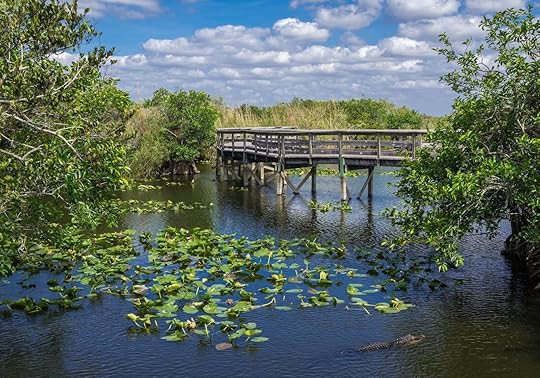
Photo: Andy Lidstone/Shutterstock
There are lots of trails in the park, but most are quite short — after all, much of the park is water. There’s not any elevation gain, so all of the hikes in Everglades are pretty easy compared to other national parks. That said, it’s still hot, muggy, and buggy, so carry lots of water and bug spray, as well as a hat to keep the sun off your head. You may also want to buy a lightweight SPF shirt.Consider the .8 mile Anhinga Trail, a paved trail with many wooden platforms ideal for wildlife viewing; the very short (.16) Pahayokee Trail to a popular birdwatching overlook, or the two-mile, round-trip Guy Bradley Trail, which runs along the beach.There are longer trails, like the Coastal Prairie Trail, but note that they aren’t being maintained, so it might be a bit of a rough experience if you’re not familiar with hiking through swamps and heavy brush.The best airboat tours in the Everglades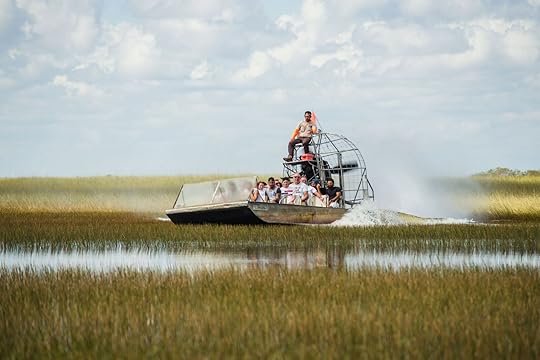
Photo: Mirigrina/Shutterstock
An airboat is a type of watercraft commonly used in marshy or shallow-water environments, and touring the waterways of Everglades National Park on an airboat is probably the park’s most popular activity. These tours are typically conducted by experienced guides who operate the airboats and provide information about the local flora and fauna, as well as the history and ecology of the area. Passengers sit in an open-air seating area on the boats, which move at high speeds, so you may want a light jacket (and you may also get a little wet).
We hope you love the activities and stays we recommend! Just so you know, Matador may collect a small commission from the links on this page if you decide to book a stay or activity. Listed prices are accurate as of the time of publication.
In Everglades, there are three operators licensed to provide airboat tours: Coopertown Airboats, Everglades Safari Park Tours, and Gator Park. (Note that Gator Park and Everglades Safari park both have captive alligators.) All three tours are between one and two hours long and move through the Everglades while your guide helps you look out for alligators, native birds, and other wildlife that live in the swampy areas.
You can also book tours that explore the areas just outside of the park, but don’t technically go inside the park boundaries. Good options include this airboat tour near Sawgrass National Park ($30 per person), this nighttime airboat tour ($48) near Fort Lauderdale, or this naturalist-led combined airboat and hiking tour ($169), which includes pickup from your hotel or home in the Miami area.
Camping in the Everglades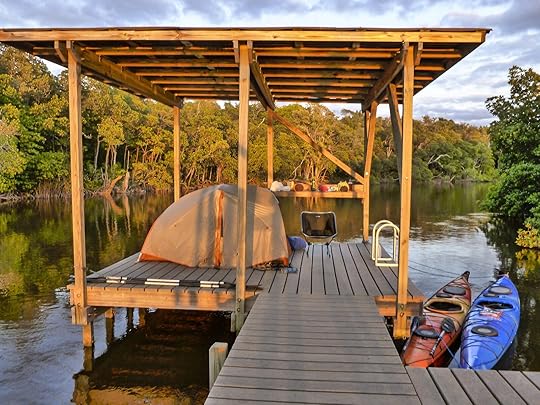
Photo: NPS / Jane Gamble
There are two types of camping available in Everglades National Park: frontcountry camping and backcountry camping.
The two frontcountry (drive-in) sites are Flamingo Campground and Long Pine Key Campground. Both have communal restrooms, showers, wash stations, and hot showers, plus each individual camp site has its own picnic table and fire pit. Flamingo Campground is open year-round, while Long Pine Key Campground is closed from May 1 to October 31. Long Pine Key is smaller, but also has more trees, which means sites feel like a bit more private. It’s also more central, while the Flamingo Campground is a bit further south. Reservations for both should be made in advance online through the website of the third-party company that manages the campsites.
The second option for camping is backcountry camping. Unlike many national parks, at Everglades, most of the sites are reached via paddling, not hiking. Many of the backcountry sites are raised wooden platforms above the water (called “chickadees”), which is a really unique experience you can’t have at most other parks. There are also quite a few beach camping sites. It’s recommended that you make your backcountry campground reservations in advance online.
You can reserve all sites in advance, all year long. Any campsites not reserved in advance are available on a first-come, first-served basis at the Everglades visitors centers, where staff can assist in creating a multi-day route between the park’s many backcountry campground locations.
Note that there’s no dispersed camping allowed, so you have to camp in a designated area. And be sure to have a freestanding (non-staked) tent if you’re camping on a raised chickadee platform.
Nearby hotels and resortsIf camping isn’t your thing, you’ll be happy to know that starting November 1, 2023, there will be one place to stay in Everglades National Park: the brand new Flamingo Lodge and Restaurant. Rooms are simple and modern, with a great starting price ($159 per night) and free WiFi. It’s near the Flamingo Campground and just steps from the water, making it a good place to stay if you want to stargaze and wake up in the park, but aren’t into the idea of pitching a tent in the wetlands.
Otherwise, you’ll want to stay in one of the cities near the park — here are the best options, listed by distance. Airbnbs near Everglades are readily available, too.
Homestead/Florida City: 10 miles from the parkHomestead has some of the most popular places to stay near Everglades National Park, probably because it’s close to the park while still offering access to the amenities of the southern Miami area.
Leisure City is just north of Homestead and has access to many big stores such as Walmart, grocery stores, Target, and other places to pick up last-minute items for your trip to the park.
Marco Island, on Florida’s gulf coast, is one of the best places to stay if you’re spending time near the western part of the park. It’s also closer to other Florida beach destinations like Naples and Fort Myers, so may be a better place to stay if you’re already on Florida’s west coast. 
More like this7 Parks in Miami for Alligators, Waterslides, Pineapples, and MoreThe 7 Best Museums in Phoenix, AZ, To Beat the Heat

Phoenix is smack in the middle of the Arizona desert in the southwestern US, so it’s no secret that it can get quite hot — summer days well over 100 degrees Fahrenheit aren’t uncommon. But fortunately, the city has hundreds of great things to do indoors, including several great museums in Phoenix that give any more famous institutions in cities like Atlanta or Chicago a run for their money.
At the best museums in Phoenix, you can study fashion design, explore the cosmos, peek into an archeological dig, or hear what instruments from the 14th century sounded like. There’s a lot to keep both kids, families, and adults happy, whether you’re into art, music, science, history, or a little bit of everything.
The seven museums below are some of the best places to spend a free hour or a free day in Phoenix year-round — but especially in the middle of summer.
Where to find the best museums in Phoenix
Phoenix is a huge city, but it’s easy to get around. It’s very driver friendly, so if you have a car, you’ll find parking near ever major museum. If you don’t have a car, either opt for rideshares, or see if there’s a rail stop near where you’re headed. Phoenix is pretty spread out, so unfortunately, it’s not a very pedestrian or bike-friendly city for most visitors.
View this post on Instagram
A post shared by Heard Museum (@heardmuseum)
The history of Indigenous peoples in the Phoenix area, specifically the Salt River Valley, spans thousands of years. The most well-known Indigenous group is the Hohokam, but other groups in the area include the Akimel O’odham (Pima), Pee Posh (Maricopa), Yavapai, and Apache. And the Heard Museum celebrates the art, culture, and history of these groups, as well as Indigenous peoples across the Americas. It has an extensive collection of Native American art and artifacts, including pottery, textiles, jewelry, kachina dolls, and artwork.
The museum is also one of the best places in the American southwest to see current and contemporary art from Native American artists, much of which blends traditional crafts and skills with modern and avant-garde themes. The Heard Museum also has large outdoor spaces with traditional dwellings and gardens, providing visitors with a glimpse into the architectural and horticultural practices of various Indigenous communities.
Throughout the year, the museum has festivals and outdoor events, workshops, lectures, and performing arts events that aim to expose visitors and residents to Indigenous traditions, cultures, and issues. There’s also a unique shop with thousands of artisan products, plus the highly rated “Courtyard Cafe” (which you can visit without actually going to the museum).
Buy your tickets in advance online, or you’ll pay about $2 more at the ticket window.
Address: 2301 N Central Ave, Phoenix, AZ 85004Hours: Daily, 10 AM-4 PMCost: Adults: $22.50, Children & students: $9, Seniors: $18Musical Instrument Museum (MIM)
Photo: DreamArt123/Shutterstock
The Musical Instrument Museum (MIM) is one of the most unique museums in Phoenix, and probably in all of Arizona. It’s a one-of-a-kind artistic center, with 200,000 square feet of space dedicated to the world of music. It has more than 15,000 instruments and music-related artifacts from nearly every historical period and country in the world. A large number of them are playable and have interactive displays so you can hear them in real life.
MIM’s layout is organized by geographical regions and countries, with galleries representing each part of the world. But the Experience Gallery at MIM may be the most fun, with a large collection of instruments guests can play. So if you ever wanted to play the spooky-sounding theremin or learn how to wail on a didgeridoo, make sure to add this Phoenix museum to your list.
Beyond the instruments, MIM also celebrates the artists and musicians who have shaped the world of music. The Artist Gallery features memorabilia from iconic musicians like Johnny Cash and Ravi Shankar, including instruments they played and personal items related to their careers. The Phoenix Museum of Music also has a crowded scheduled of concerts and events, and tickets for events usually start around a reasonable $30 or so.
Address: 4725 E Mayo Blvd, Phoenix, AZ 85050Hours: Daily, 9 AM-5 PMCost: Adults: $20, Teens: $15, 12 & under: $10Arizona Science CenterView this post on Instagram
A post shared by Arizona Science Center (@azscience)
The Arizona Science Center is one of the best hands-on museums in Phoenix, especially if you’re with kids. While it’s not a kids museum, it’s targeted to families, so a good deal of the exhibits are aimed at the elementary-school crowd.
One of the center’s standout features is the “Get Charged Up!” exhibit, focused on electricity and magnetism through hands-on experiments. There’s also a high-tech planetarium (which hosts the occasional laser night show set to artists like the Beastie Boys and Beyoncé), plus an IMAX 3D theater.
The museum’s permanent exhibits include sections on digital technology, the human brain, and the science of flight. It also frequently hosts traveling exhibits, including past exhibits on everything from the deep ocean to deep space and mosquitoes to dinosaurs. It also has a very extensive menu of ongoing events, from “Solar Month” every March to Halloween events, eclipse-viewing parties, and overnight sleepovers in the museum.
Address: 600 E Washington St, Phoenix, AZ 85004Hours: Daily, 10:30 AM-4:30 PMCost: Adults: $21.95, Kids: $15.95. Extra costs for planetarium and IMAX theaterPhoenix Art Museum
Photo: DreamArt123/Shutterstock
The Phoenix Art Museum is a cultural center in Arizona, known for its diverse and expansive collection that spans various art forms and eras. It showcases both classic and contemporary art, with pieces from artists guests will surely recognize. That includes “Les arceaux fleuris, Giverny” by Claude Monet, dresses from designer Alexander McQueen, and “Pink Abstraction” by Georgia O’Keeffe. It includes art from European, American, Asian, Latin American, and contemporary artists, ranging from Renaissance oil work to cutting-edge installations. There’s also an outdoor sculpture garden, plus a cafe and a quirky museum store with all kinds of art-themed items and gifts.
The museum covers close to 300,000 square feet across three floors, so you’ll definitely want to pick up a map when you enter and prioritize what you want to see. It also has rotating specie exhibits, plus events ranging from art-making workshops to lectures and discussions. Phoenix Art Museum tours are complimentary with admission and offered Wednesday through Sunday, starting at 11:30 AM. There’s also “pay what you wish” admission every Wednesday from 3 to 9 PM.
Address: 1625 N Central Ave, Phoenix, AZ 85004Hours: Wednesday, 10 AM-9 PM; Thursday-Sunday, 10 AM-5 PM. Closed Monday & TuesdayCost: Adults: $24, Seniors: $21, Under 17: $5Desert Botanical Garden
Photo: Chris Curtis/Shutterstock
While not a traditional museum, this garden showcases the beauty of the Sonoran Desert. What makes this garden truly unique is its unwavering focus on showcasing the breathtaking flora that thrives in some of the harshest environments on Earth. This outdoor museum covers about 140 acres and has more than 50,000 desert plants from thousands of species. It highlights plants from arid regions around the world, not just the southwestern US.
The garden has a variety of meandering trails, including the Desert Wildflower Trail, which showcases the vibrant colors that emerge after seasonal rains, and the Sonoran Desert Trail, lined with towering cacti and other impressive succulents. Many of the plants at the botanical garden are quite old, while others are rare and endangered.
Throughout the year, the Desert Botanical Garden hosts various events and programs, including art exhibitions, horticultural workshops, and concerts. One of the most popular is the Christmastime “Las Noches de las Luminarias” event, where the garden is adorned with thousands of luminaria bags and twinkling lights.
Address: 1201 N Galvin Pkwy, Phoenix, AZ 85008Hours: May-September, 7 AM-8 PM; October-April, 8 AM-8 PMCost: Adults: $24.95-$29.95 (depending on day), children 3-17: $14.96-$16.95Children’s Museum of PhoenixView this post on Instagram
A post shared by Children’s Museum of Phoenix (@childmusephx)
The Phoenix Children’s Museum is an unbeatable place to take kids in the city, especially when they have lots of energy and it’s too hot for them to play and run around outside. It’s the preeminent museum in Phoenix for kids, offering a hands-on, interactive approach to discovery and exploration. Exhibits are designed to inspired creativity, covering a range of topics from art and science to everyday life through children’s eyes. The museum focuses on early learning for little kids, with most activities suited to children in the 3-5 year range — though there are baby and toddler-focused activities in most exhibits.
One of the highlights is the Art Studio, where young artists can experiment with a variety of materials and techniques to create their own masterpieces. The “Noodle Forest” is also an especially popular feature in the museum, as is “The Climber,” where kids can get a birds-eye view of the museum and feel like they’re climbing a tree.
One of the best things about this museum is that it host multiple daily events, from foam pools kids can jump in to guided garden tours where kids can help water and tend to the growing vegetables. Most events and tours are free. And speaking of free: the museum has free entry on the first Friday of every month, starting at 5 PM.
Address: 215 N 7th St, Phoenix, AZ 85034Hours: Daily, 9 AM-4 PMCost: $17 per person, kids under 1 are freeS’edav Va’aki Museum
Photo: Steve Cukrov/Shutterstock
The S’edav Va’aki Museum was formerly known as the Pueblo Grande Museum, but was renamed in early 2023 to honor the Indigenous people of the area. It’s a great place to delve into the very history of Phoenix and its Hohokam people, who inhabited the Phoenix area centuries ago. The museum showcases ancient artifacts, pottery, and a partially excavated Hohokam village. The Hohakam inhabited the region from approximately 450 to 1450 AD, and it’s one of the best museums in Phoenix if you’re interested in ancient cultures, especially given the large collection of artifacts.
The main feature of the museum is the archaeological site, where visitors can see the remnants of a Hohokam platform mound (likely used for ceremonial purposes) and irrigation canals, which allowed the town to grow and practice agriculture. The museum exhibits display what archeologists know so far about the Hohakam through artifacts like pottery, tools, and jewelry. Remember that much of this particular museum is outdoors, so you’ll want sunscreen and a hat when you’re walking around the excavation sites.
Address: 4619 E Washington St, Phoenix, AZ 85034Hours: Mon-Sat, 9 AM-4:45 PM. Between October and April, it’s also open on Sunday, 1 PM-4:45 PMCost: Adults: $6; Seniors: $5; Children under 18: $3Where to stay in PhoenixWe hope you love the spaces and stays we recommend! Just so you know, Matador may collect a small commission from the links on this page if you decide to book a stay. Listed prices are accurate as of the time of publication.
Phoenix is quite large, with about 1.6 million residents, and quite spread out. While that means you ‘ll have to drive to most museums, a perk is that there are lots and lots of hotels, which helps keep prices low. You can stay at tried-and-true chain hotels, boutique desert hotels, Wild West-themed inns, or modern and trendy hotels that look like they should be in San Francisco.
There are also some very cool Airbnbs in Phoenix, almost all of which have private pools, plus plenty of availability in nearby cities like Scottsdale, which is a bit closer to some of the city’s best outdoor recreation. 
Experience the Best of Cairo From These Comfortable Airbnbs

Cairo is a great place to visit for its rich history, vibrant culture, and delicious food. It is home to some of the most iconic landmarks in the world, including the Pyramids of Giza and the Sphinx. Visitors can also explore the ancient city of Memphis, the Coptic Cairo, and the Islamic Cairo. Cairo is also a great place to experience Egyptian cuisine, which is known for its bold flavors and fresh ingredients.
Traveling to Cairo? Check out Matador’s Egypt accommodations guides: Egypt’s Mena House Hotel Offers Views of the Pyramids of Giza From Your Balcony This Giza Airbnb Has a Pyramid-View Jacuzzi for Less Than $100 Per Night This Resort on Tawila Island Is the Maldives of Egypt
We hope you love these Airbnb Cairo vacation rentals! Just so you know, Matador may collect a small commission from the links on this page if you decide to book a stay. Listed prices are accurate as of the time of publication.
Apartment close to downtown with a view of the Nile Photo: Airbnb
Photo: Airbnb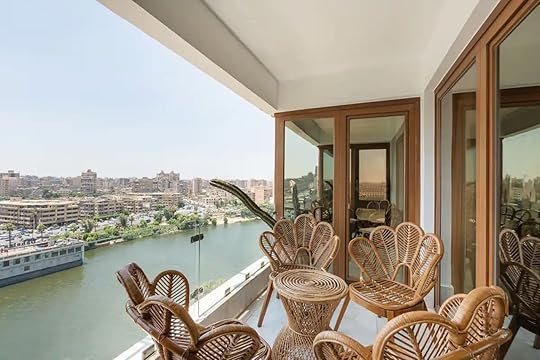 Photo: Airbnb
Photo: Airbnb Photo: Airbnb
Photo: Airbnb Photo: Airbnb
Photo: AirbnbSee more photosThis clean and modern Zamalek apartment is close to downtown and features two bedrooms, two and a half bathrooms, and a view of the Nile River. At the apartment, guests can play pool at the billiards table or cook in the kitchenette. Outside, the space is within walking distance of attractions like the Egyptian Museum, Cairo Tower and more. It feels inviting and bright, with plenty of natural light and warm wooden tones complimented by light tan walls and decor.
Six guests, two bedrooms
Price: $184 per night
 Photo: Airbnb
Photo: Airbnb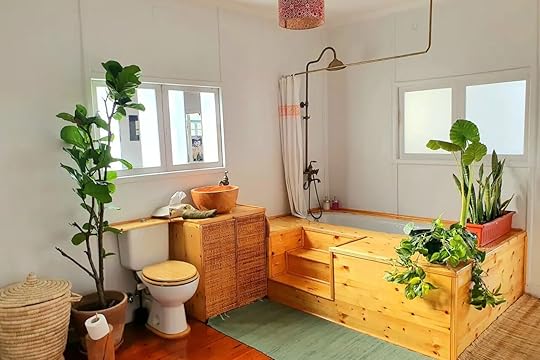 Photo: Airbnb
Photo: Airbnb Photo: Airbnb
Photo: Airbnb Photo: Airbnb
Photo: AirbnbSee more photosThis unique, wooden one-bedroom houseboat is in the middle of Cairo and features an awesome view of the Nile River. The floating house sits on Zamalek island, with easy access to many of Cairo’s main attractions — it’s just a 10-minute drive from Downtown Cairo, Tahrir Square, and The Egyptian Museum. The overnight stay includes plenty of drinking water, kitchen essentials in the fully equipped kitchenette, linens, and WiFi. Spend time in the glass sunroom or enjoy the large, private bathroom, which boasts a cozy bathtub. The furnishings feel airy and bohemian and bright, with a welcoming atmosphere.
Two guests, one bedroom
Price: $219 per night
 Photo: Airbnb
Photo: Airbnb Photo: Airbnb
Photo: Airbnb Photo: Airbnb
Photo: Airbnb Photo: Airbnb
Photo: AirbnbSee more photosThis three-bedroom, air-conditioned apartment is in a peaceful location and within a five-minute walking distance from attractions like the Sphinx and the Pyramids entrance gate. Guests can enjoy views of the pyramids from the balcony. There’s a kitchen with a high-tech refrigerator, a stove, a kettle, a coffee maker, and a microwave. Other upscale amenities include freshly laundered Egyptian cotton linens, a washing machine and a Smart TV.
Six guests, three bedrooms
Price: $130 per night
 Photo: Airbnb
Photo: Airbnb Photo: Airbnb
Photo: Airbnb Photo: Airbnb
Photo: Airbnb Photo: Airbnb
Photo: AirbnbSee more photosThis large two-bedroom apartment offers guests access to two separate bathrooms, a big kitchen, and scenic views of the Nile River. It’s outfitted with upscale amenities like a full kitchen, WiFi, a smart TV and a full workspace and dining room area for gathering. The color scheme is bright and welcoming, with lots of natural light and traditional Egyptian decor like ornate tiling and warm colors.
Four guests, two bedrooms
Price: $185 per night
 Photo: Airbnb
Photo: Airbnb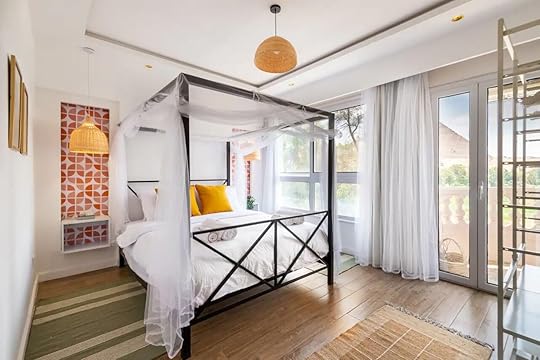 Photo: Airbnb
Photo: Airbnb Photo: Airbnb
Photo: Airbnb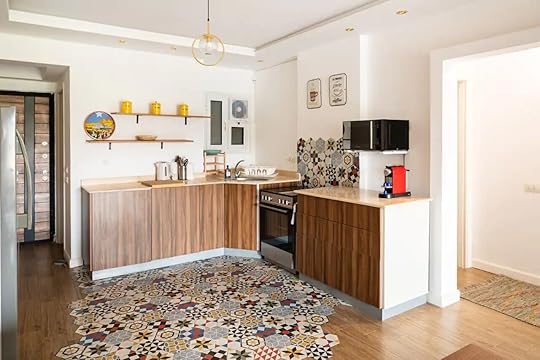 Photo: Airbnb
Photo: AirbnbSee more photosThis stunning, stylishly outfitted two-bedroom apartment is just steps from the Giza Pyramids, located in a bustling tourist district with access to many attractions. There’s a fully equipped kitchen, a full bathroom and another half bathroom, a spacious living room with a cozy sofa, and two separate bedrooms. Guests can enjoy upscale amenities like the large TV, washing machine, Nespresso machine and large balcony with pyramid views.
Four guests, two bedrooms
Price: $107 per night
 Photo: Airbnb
Photo: Airbnb Photo: Airbnb
Photo: Airbnb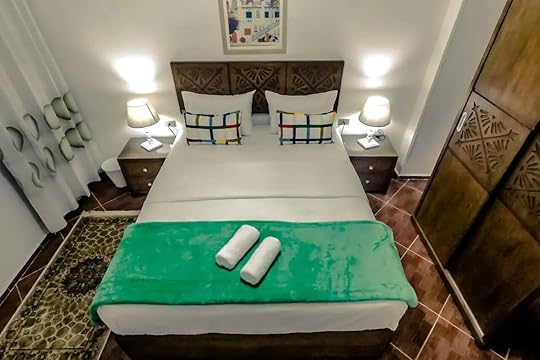 Photo: Airbnb
Photo: Airbnb Photo: Airbnb
Photo: AirbnbSee more photosThis bright and airy apartment features views of the pyramids and a private terrace. The dark and classic furniture contrasts with the warm traditional decor of the rest of the apartment, which includes a full bathroom and multiple comfortable bedrooms. There’s a kitchen for cooking, and the property is in an area within walking distance of multiple restaurants and attractions.
Six guests, three bedrooms
Price: $118 per night
 Photo: Airbnb
Photo: Airbnb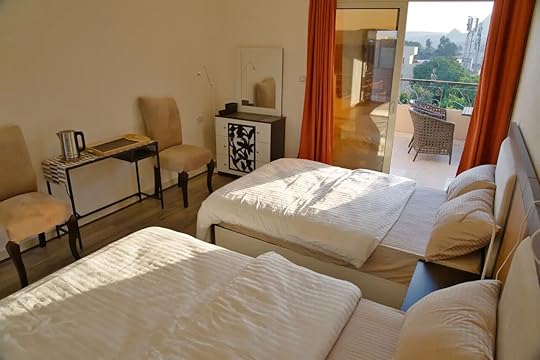 Photo: Airbnb
Photo: Airbnb Photo: Airbnb
Photo: Airbnb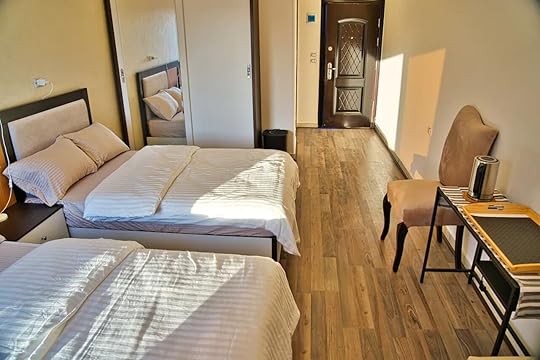 Photo: Airbnb
Photo: AirbnbSee more photosThis brand-new, tranquil property boasts stunning sights of the pyramids from the bedroom and a large rooftop with an impressive view, as well. Even though it’s a peaceful space, it’s just a two-minute walk from the entrance to the pyramids. There are two single beds, a private entrance, and amenities including 4G Wif. Guests have access to laundry facilities if needed, and there’s a kettle with tea. The multilingual hosts are willing to coordinate transportation and book tours if guests would like.
Two guests, one bedroom
Price: $59 per night
 Photo: Airbnb
Photo: Airbnb Photo: Airbnb
Photo: Airbnb Photo: Airbnb
Photo: Airbnb Photo: Airbnb
Photo: AirbnbSee more photosThe views from the terrace are stunning at this property located in a historic area. It faces the pyramids and is a clean and warm-spirited spot to set as a home base in Cairo. Inside the property, guests can enjoy cooking in the kitchen and have easy access to unforgettable landmarks in the area. It’s in a friendly neighborhood that doesn’t mind visitors. The traditional decor makes the home feel authentic, and there’s plenty of natural light throughout the space.
Two guests, one bedroom
Price: $113 per night
 Photo: Airbnb
Photo: Airbnb Photo: Airbnb
Photo: Airbnb Photo: Airbnb
Photo: Airbnb Photo: Airbnb
Photo: AirbnbSee more photosThis stunning apartment faces the pyramids and features a lineup of authentic antique furniture that was hand-collected by the owner. There’s a private entrance for visitors and a large window inside the bedroom boasting sights of the Pyramids in addition to the balcony space (that is shared with one other guest). The bedroom features a large bed and bright, classic Egyptian furnishings. The bathroom offers a relaxing soaking tub for winding down after a day of exploring.
Three guests, two bedrooms
Price: $120 per night
Cairo, Egypt, is 10 hours ahead of Los Angeles and seven hours ahead of New York City, at GMT+3.
Is Cairo safe?Cairo is a very modern city with a medium safety risk for travelers. It’s said that authorities are making efforts to enhance the safety of the city, and security measures are at the highest level for tourists who are protected by a dedicated police force. Pickpocketing risk is high, and the threat of terrorism does exist. 
Grab Your Friends and Live the Good Life on a Trip To Madrid

With incredible shopping, stylish restaurants, historic architecture, and world-famous nightlife, the lively Spanish capital of Madrid sets the backdrop for a splurge-worthy trip. Madrid exemplifies chulo, the Spanish word for cool, which you’ll embrace after spending days getting lost in the colorful markets, strolling through El Retiro Park, and sipping cocktails on a rooftop as the sun sets.
Here are our tips for living the glamorous, laid-back Spanish lifestyle with your best pals and finding your perfect version of Madrid that combines culture, gastronomy, and nightlife with Spanish luxury.
Sleep in sumptuousnessTreat yourself (and your friends) to five-star splendor, the Madrid way. The city’s happening hotel scene has seen many sophisticated newcomers in recent years, impressing with modern amenities combined with warm Spanish hospitality. Options run the gamut — choose from hotel bars with 360-degree views, or sleep in a 19th-century palace. Many properties offer a gym, state-of-the-art spa, and suites with unbeatable views of the historic city. Choose a hotel within walking distance of the Royal Palace, Almudena Cathedral, and Teatro Real opera house, or one steps from Gran Vía, and then look forward to complimentary wifi, in-room espresso machines, and twice-daily housekeeping services.
Maybe you’ll check into The Madrid Edition, one of the newest players in Madrid accommodation. Or perhaps you’ll opt to sleep like royalty at the Gran Meliá Palacio de los Duques, located in the former palace of the Dukes of Granada de Ega. The Hotel Montera Madrid, Curio Collection by Hilton, extends five-star luxury near Madrid’s famous Gran Vía. And the Hyatt Centric Gran Vía Madrid is set within a gorgeous 10-story 1920s art deco building.
Whichever upscale spot you book, know to expect a luxurious space for some rest and relaxation after a night of dancing and drinking, just what you need to gear up for the next day’s adventure.
Spend your days the Spanish way
Photo: Madrid Destino
Madrid offers no shortage of ways to explore and immerse yourself in this historic city, but there are certain activities that will really help you zero in on the Madrileño lifestyle.
For nature lovers, take a stroll through El Retiro Park — part of the Landscape of Light, the first site in Madrid to be granted UNESCO World Heritage status — right in the city center. The sprawling green space is the place to soak up local life and enjoy some fresh air. Pack a picnic or rent a rowboat on the lake for a picturesque afternoon. You can even rent a bike to pedal around the park. Don’t miss the amazing monuments, including the Puerta de Alcalá gate, the many ornamental fountains, the Obelisk, and the monument to Alfonso XII.
When you’re done exploring outdoors, make your way to the edge of the park and the Paseo del Prado, another part of the Landscape of Light and home to some of Spain’s best art museums. These include the Prado, where you can bask in artwork by Velázquez, Goya, El Greco, Titian, Rubens, and Hieronymus Bosch; the Thyssen-Bornemisza, with works by Dürer, Frans Hals, Gauguin, Van Gogh, and Kirchner; and the Reina Sofía, which houses one of the finest collections of contemporary art in the world, including Picasso’s Guernica.
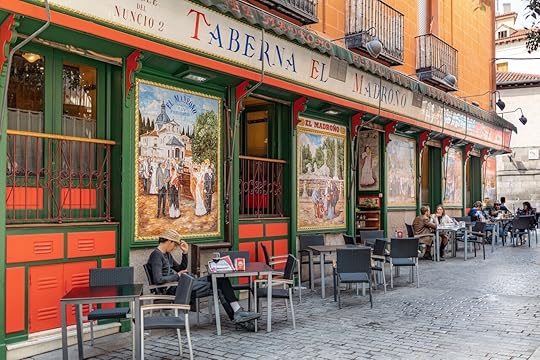
Photo: Madrid Destino
Next, it’s on to a more intangible Spanish art form: terraceo. This is the practice of moving from terraza to terraza, which are outdoor bars and cafes, and is one of the easiest ways to immerse yourself in the local culture. The popular pastime exemplifies Madrileños’ love of sharing a table and laughter. Sign up for a leisurely afternoon of tapas and drinks under the Spanish sun with friends old and new. You’ll find terrazas all over the city, typically filled with locals savoring food, drinks, and time together.
Post-terraza, it’s time to shop for Spanish fashion and get lost in the stalls of Plaza de Cascorro, in the central neighborhood of La Latina. Or, if your visit includes a Sunday, seek out El Rastro, Madrid’s largest outdoor flea market and the ideal place to pick up a souvenir or two. The market features shops selling a variety of items, from artisanal goods to clothing and accessories. After shopping, it’s customary to cap off the experience with an aperitivo at one of the many bars and tabernas in the area (one of the best is El Viajero). You’ll see plenty of locals doing the same, ordering beer, wine, or vermouth on tap accompanied by a plate of traditional tapas.
If you and your friends consider yourselves foodies, make sure to plan a lengthy stop to sample your way through the gastronomy of Mercado San Miguel. Located just a short distance from the Plaza Mayor, the market is a stunning example of cast-iron architecture in the city, and it’s filled with everything from tapas to seafood, from local fruits and veggies to typical Spanish dishes plus international delights. Grab a glass of tinto de verano (similar to sangria) and treat yourselves to some decadent cuisine from one of the many food stalls.
Uncover Madrid after dark
Photo: Madrid Destino
Start your evening overlooking Madrid’s stunning skyline while sampling cocktails. Check out the view from Azotea del Círculo at Círculo de Bellas Artes as the sky turns orange, or enjoy 360-degree panorama from the Casa Suecia rooftop. El Cielo de Chicote, the rooftop at the Hotel Montera Madrid, Curio Collection by Hilton, just entered the scene with excellent cocktails and space to lounge while you take in the majestic skyline views. Or discover El Jardín de Diana, a rooftop bar located on the 10th floor of the Hyatt Centric Gran Vía Madrid — admire the breathtaking view of the city center while enjoying an upscale meal paired with an energetic selection of cocktails.
Once the sun has set, it’s time for flamenco. Declared an Intangible Cultural Heritage of Humanity by UNESCO, flamenco is a performance art that combines song, dance, and musicianship with intense passion, and it’s a tradition that can seamlessly mix Spanish cuisine and culture. Corral de La Morería combines flamenco with fine dining and is the only flamenco tablao (venue) awarded a Michelin star. Or try the legendary Villa Rosa, said to be the oldest in Madrid — it recently reopened with a new name: Tablao Flamenco 1911. You can also catch daily flamenco performances at the Cardamomo Flamenco Tablao, where every month a different group takes the stage to showcase their talent.

Photo: Madrid Destino
As the night rolls on, follow the crowd back to El Retiro Park for a completely different experience after dark. Here you’ll find Florida Park, which encompasses a number of distinct spaces serving up food, drinks, and music. Check out the legendary party room, where Frank Sinatra and Lola Flores once performed and which still retains its characteristic red walls. Barbara Ann is another popular spot, known for its rock essence. Inspired by Freddie Mercury’s legendary shindigs, this space takes you on a journey through the history of music, from the Beatles to Rosalía, with a focus on the 1970s-2000s. Along the way, you can indulge in culinary delights that stretch from Asia to South America.
Discover Madrid’s liquid revolution at one of the city’s many mixology-focused cocktail bars. Museo Chicote has been serving drinks since 1931 on the iconic Gran Vía — it’s said to be Spain’s very first cocktail bar — and was frequented by 1950s stars Ava Gardner and Grace Kelly. Tucked into the basement floor of Robuchon España, meanwhile, Le Speakeasy serves classy cocktails that evoke Paris of the 1920s. This is also where you can catch Les Nuits de Robuchon, showcasing the incredible talents of renowned European mentalist Pablo Raijenstein in his one-of-a-kind monthly performances at exclusive small-group events.
Keep the drinks flowing with a visit to Salmón Gurú, a spot that consistently ranks towards the top of “The World’s 50 Best Bars” list. Led by Argentine bartender Diego Cabrera, the Barrio de Las Letras bar has a bold and surprising ambiance that matches its envelope-pushing cocktail menu. It’s divided into three distinct spaces, each with its own design: Animal prints adorn the area around the entrance, the midsection is decorated with specially commissioned comic-inspired art, and the rear has an Asian vibe.
Of course, to truly participate in Madrid’s nightlife, a visit to one of the city’s world-class discotheques is a must. In the unassuming basement of the New Apolo Theatre, you’ll find Medias Puri, filled with three dance floors and live shows. There’s enough in this one spot to keep you busy for many nights, let alone one. Or, for a fun surprise, make your way to Chung Lee Nails, a seemingly ordinary nail salon where — yes — you could get your nails done. But tucked away in the back is a secret entrance to a discotheque where bass beats bump while dancers undertake impressive acrobatic feats. Bonus: The late-night / early-morning crowd will appreciate the Korean karaoke on offer here.
And then it’s time to do it all again, for Madrid’s lively culture is present throughout the city, day and night. Enjoy luxury and hospitality across the city’s multitude of top-notch hotels, restaurants, and bars while finding your true Spanish experience. Grab your friends and start exploring! For more, seek out Tourism Madrid on Facebook, Instagram, and their website. 

Photo: Madrid Destino
September 7, 2023
Bookmark These Airbnbs Near Canyonlands National Park for Your Next Southern Utah Trip
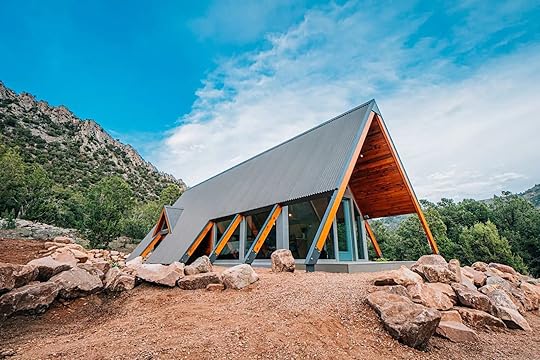
National park accommodations generally fall into a few basic categories: camping, glamping, inns or lodges, and hotels. Some national parks also come with a homier option: Airbnbs. Take Canyonlands National Park. Roughly 30 minutes outside of the well-loved desert town of Moab, Utah, Canyonlands is one national park that’s situated in close proximity to quite a few impressive Airbnbs. Sure, you could easily find a nice hotel near Canyonlands National Park, but why not pick the Canyonlands National Park Airbnb that best suits your style — from quintessential cabins, to private yurts, to large and luxurious rentals that can fit the whole family.
We hope you love the Airbnb Canyonlands rentals we recommend! Just so you know, Matador may collect a small commission from the links on this page if you decide to book a stay. Listed prices are accurate as of the time of publication.
Traveling to Utah? Check out Matador’s Utah lodging guides:Where to stay near Zion National ParkThese Stunning Cabins Are the Ultimate Zion National Park BasecampThe best hotels in Utah for a national parks road tripThe ultimate ‘work and play’ road trip through Utah’s canyon countrySalt Lake City Airbnbs to base your Utah adventure tripBears Ears Luxury Retreat
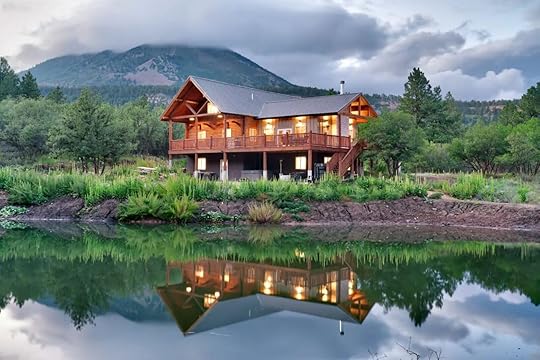 Photo: Airbnb
Photo: Airbnb Photo: Airbnb
Photo: Airbnb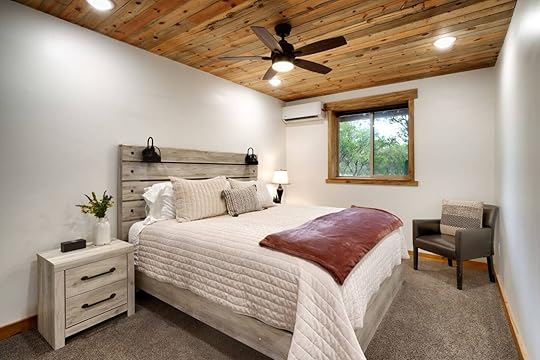 Photo: Airbnb
Photo: AirbnbThe likelihood that you’re planning a trip to Canyonlands National Park with 16+ people is slim, but if you’re traveling with a big group, this six-bedroom (and 29-bed!) Airbnb is a no-brainer. Size aside, the vacation rental is perfectly outfitted for families or groups of all ages, with a wide variety of amenities ranging from fire pits with roasting sticks, a large hot tub, a barbecue, and both indoor and outdoor kitchens to a kid-friendly loft and games such as shuffleboard, ping pong, and air hockey. Situated on three acres next to Bears Ears National Monument, the Airbnb is roughly 20 miles from Canyonlands and a short drive to Arches National Park, as well. Ample parking is available on the property if you’re coming in multiple vehicles, as well as RV hookups.
Sixteen guests, six beds
Price: $974 per night
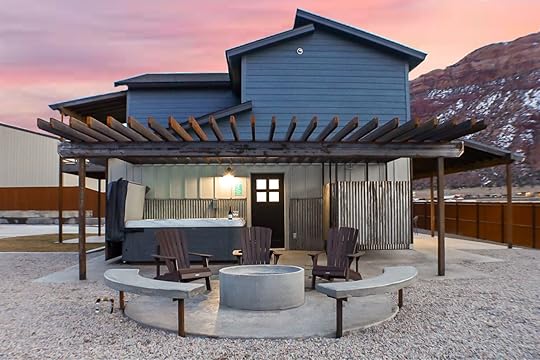 Photo: Airbnb
Photo: Airbnb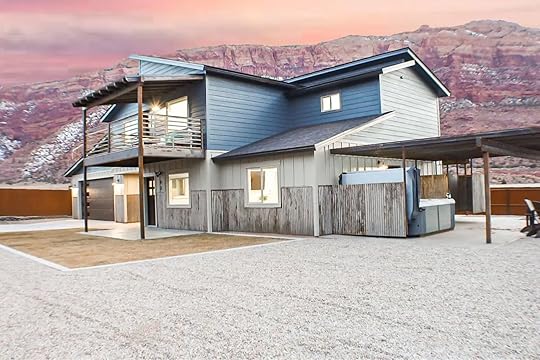 Photo: Airbnb
Photo: Airbnb Photo: Airbnb
Photo: AirbnbThis four-bedroom Airbnb is about as close to Canyonlands as it could be without actually being inside the park. Located right off US Route 191, a little south of Moab, the property provides tons of space to spread out — both indoors and outdoors. The fire pit, hot tub, and grill area with alfresco seating are definite highlights of the outdoor spaces while the entire interior is immaculate, from the fully equipped modern kitchen to the finely decorated bedrooms and three-and-a-half pristine bathrooms. With one king bed, two queen beds, and a bunk-style single and double bed combo in the fourth bedroom, sleeping configurations are easy to figure out no matter what kind of group you’re traveling with.
Ten guests, four bedrooms
Price: $685 per night
 Photo: Airbnb
Photo: Airbnb Photo: Airbnb
Photo: Airbnb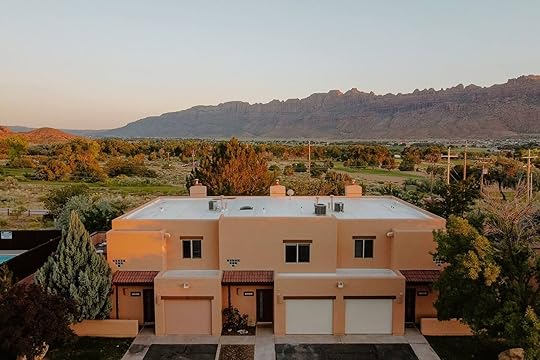 Photo: Airbnb
Photo: AirbnbThis three-bedroom Airbnb minutes from downtown Moab has something for every type of national park traveler. Parents will appreciate the kid-friendly amenities, such as a high chair, crib, and pack-n-play, as well as entertainment ranging from foosball and cornhole to books and board games. Pet owners can bring their pooches. Remote workers can take advantage of the ultra-fast gigabit internet. Foodies will love the brand new kitchen, barbecue grill, and French press and drip coffee machine. Guests of all ages will adore the house’s private four-person jacuzzi and community pool a stone’s throw away. And, of course, adventurers are in good hands too, with world-class hiking, mountain biking, rock climbing, and off-roading in the area — complete with a beautiful lookout point down the street that’s perfect for unwinding over sunset views.
Six guests, three bedrooms
Price: $413 per night
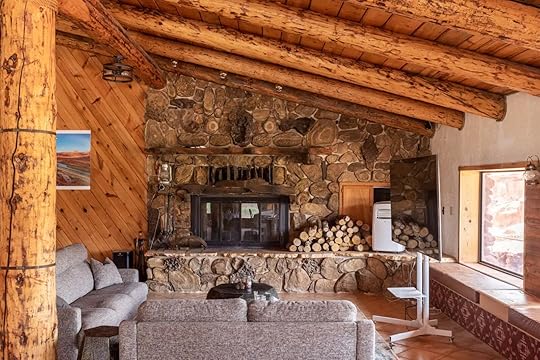 Photo: Airbnb
Photo: Airbnb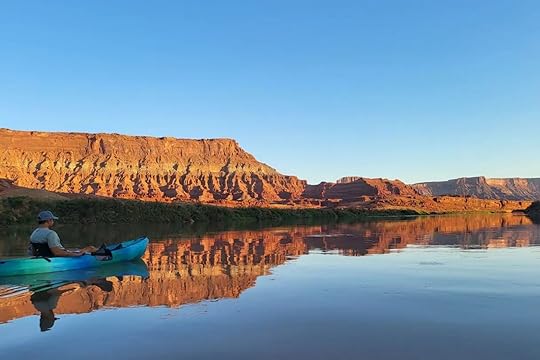 Photo: Airbnb
Photo: Airbnb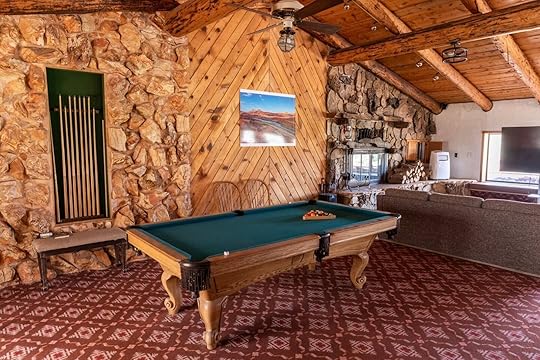 Photo: Airbnb
Photo: AirbnbRoughly 30 minutes from Moab and Canyonlands National Park, this three-bedroom lodge at the Redrock River Ranch sits on a private 138-acre plot that opens to uninterrupted views of the Colorado River. What makes this sustainably-minded lodge especially unique is its cave-style dwellings — complete with private bathrooms, heat, and air-conditioning — which are complemented by a pleasant main lodge. The coolest feature, however, is one many guests probably won’t use: a private airstrip that allows guests to fly right onto the property. In total, the lodge can accommodate up to 10 guests, but you should note that there are other lodgings on the property that may or not be occupied during your stay.
Ten guests, three bedrooms
Price: $395 per night
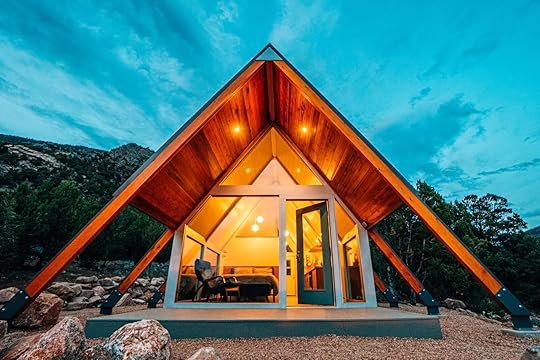 Photo: Airbnb
Photo: Airbnb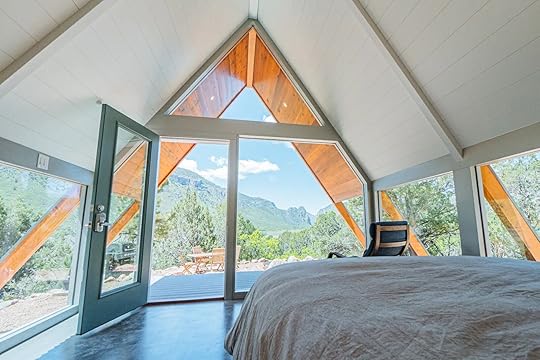 Photo: Airbnb
Photo: Airbnb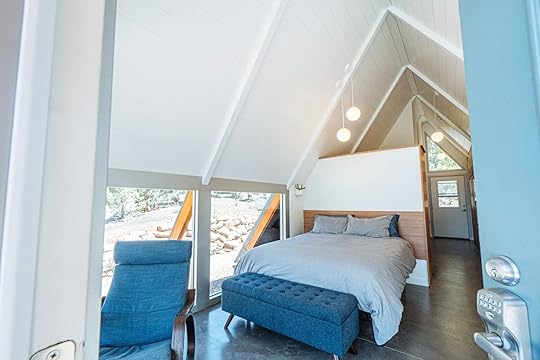 Photo: Airbnb
Photo: AirbnbThis two-bedroom Airbnb is the sort of place you’re tempted to book just by looking at it. According to the hosts, the A-frame design is a nod to the local geology, with an angular roof that resembles the steep walls of the canyon that surrounds the cabin. The interior is modern and comfortable, but the location is what really stands out — it’s not the closest property to Canyonlands, being located across the Colorado border, but if you’re up for a day trip, the national park is reachable in roughly 2.5 hours by car. As for the property itself, public lands surround the secluded private lot, so you can enjoy Rocky Mountain terrain and Utah’s largest park in a single trip. Not that guests are permitted to bring one pet for an additional fee.
Four guests, two beds
Price: $375 per night
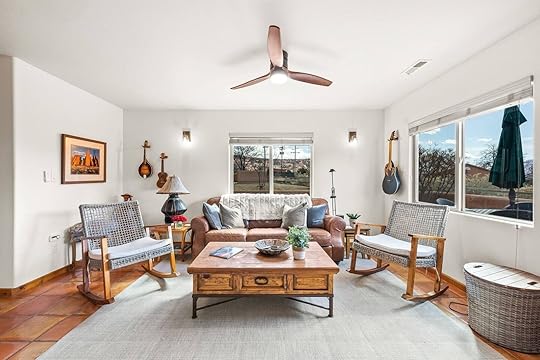 Photo: Airbnb
Photo: Airbnb Photo: Airbnb
Photo: Airbnb Photo: Airbnb
Photo: AirbnbIdeal for a couple or a family with two small kids who’ll be comfortable in the bunk beds in the family room, this two-bedroom townhome is located on the local golf course near downtown Moab. The Airbnb underwent an extensive renovation in March 2023, introducing new appliances, kitchen equipment, a rooftop deck, and more. For families with young children, the rental includes baby locks on lower cabinets, a baby gate in the family room, an adjustable Stokke highchair, and a pack-n-play. Beyond its proximity to Canyonlands National Park, for outdoor recreation, guests of the townhome also get seasonal access to the shared but relatively private La Camino community pool, which only serves only 18 condos.
Six guests, two bedrooms
Price: $325 per night
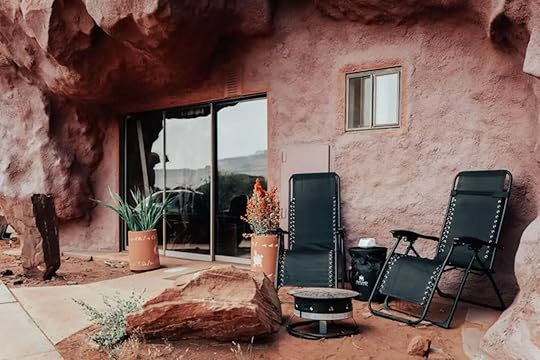 Photo: Airbnb
Photo: Airbnb Photo: Airbnb
Photo: Airbnb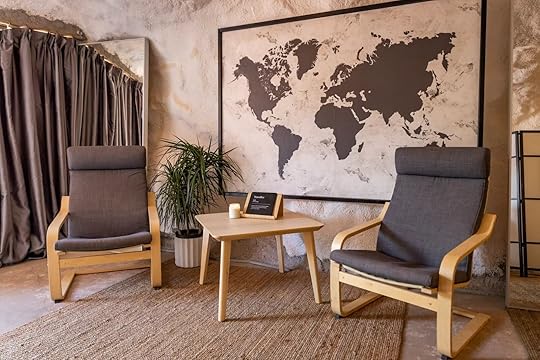 Photo: Airbnb
Photo: AirbnbSleep among the red rocks on the banks of the Colorado River in this cozy cave glampsite in Moab. The studio-sized suite features modern decor and is comfortably equipped with a queen bed, private bathroom, kitchenette, and barbecue, plus high-speed WiFi and air-conditioning to emphasize the glamour in glamping. There’s also a central bathhouse on the property with four bathrooms and hot showers. When you’re not exploring Canyonlands National Park and the rest of the Moab area, guests can test their aviation skills with introductory flight instructions on site (fly-ins are available for experienced pilots). Note that pets are allowed, provided you pay a fee.
Four guests, one bedroom
Price: $297 per night
 Photo: Airbnb
Photo: Airbnb Photo: Airbnb
Photo: Airbnb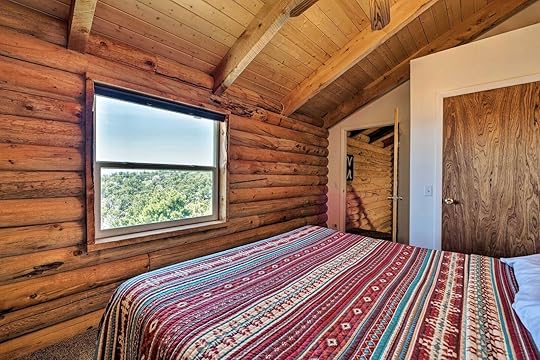 Photo: Airbnb
Photo: AirbnbFrom 7,600 feet up, you can see six different mountain peaks in the La Sal range from this two-bedroom cabin, whether you’re lounging on the upper or lower decks, manning the grill for an alfresco dinner, or winding down by the fire pit in the evening. Yet despite its remote location, the cabin is only 18 miles from downtown Moab and about 50 miles from Canyonlands National Park, which means you get reach the park in about an hour and a half by car. On the other hand, because you’re pretty far removed from the rest of the world here, the cabin comes fully equipped with both basic and extra amenities, from a washer-dryer and complimentary bath products to books and games for entertainment. Up to two pets are allowed with an additional fee, and the hosts recommend that road-trippers have 4WD to navigate the steep and winding roads, particularly in the winter.
Six guests, two bedrooms
Price: $296 per night
 Photo: Airbnb
Photo: Airbnb Photo: Airbnb
Photo: Airbnb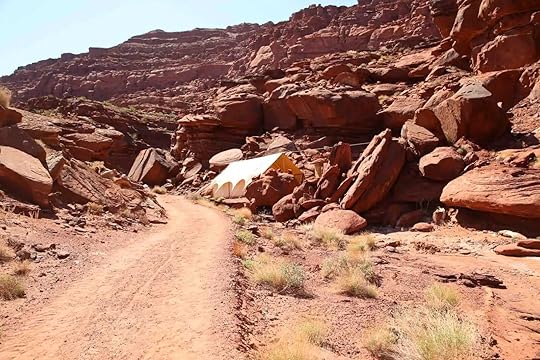 Photo: Airbnb
Photo: AirbnbCrooked Bindi Ranch is an 80-acre glampsite with two luxury tents that are positioned roughly 70 yards apart from one another, so even if you’re not alone on the property, you’re guaranteed to feel like you have it pretty much to yourself. This is especially true considering both tents come with open-air bathrooms that are built into the red-rock landscape, a stone’s throw from the private patios. The ranch itself is conveniently located about nine miles from downtown Moab and seven miles from Canyonlands National Park. For mountain bike enthusiasts, the trailhead for the Amasa Back Mountain Bike Trail is a short two-mile drive north from the ranch gate.
Four guests, one bedroom
Price: $222 per night
 Photo: Airbnb
Photo: Airbnb Photo: Airbnb
Photo: Airbnb Photo: Airbnb
Photo: AirbnbSpread across 22 acres, Glamping Canyonlands is serious about its commitment to sustainability. It’s entirely solar-powered, including the communal bathroom with its complimentary organic bath products, and relies exclusively on collected water. (On that note, guests are advised to bring their own drinking water and should be aware that the tents aren’t insulated, so there’s no temperature control outside of natural breezes and extra blankets.) But that doesn’t mean that the tents don’t come with amenities — fun touches such as personal hammocks, fire pits, grills, picnic tables, board games, phone charging packs, and a one-hour nightly sauna session are all included in the booking fee. (You can also participate in Sunday morning yoga and bi-monthly astronomy tours for a fee.) Luckily, this particular tent is the best place to stargaze on the property, thanks to its unique sunroof — bring a telescope if you have one. 
Two guests, one bedroom
Price: $160 per night
This So-Cal Glamping Resort Feels a World Away From LA’s Urban Chaos

Storied glamping outpost Huttopia Paradise Springs feels like its name — Paradise — as a welcoming oasis hidden in a canyon amongst an arid mountain landscape. The property is set on 150 acres nestled into the heart of the San Gabriel Mountains in the Angeles National Forest, within 90 minutes of Los Angeles, San Bernardino and Riverside Counties, and 30 minutes from the quaint mountain village of Wrightwood.
The property itself has a very interesting backstory and history. It’s said that during Prohibition, Paradise Springs served as a debaucherous destination for the wealthy and elite of Southern California to hide away and party in the forest.
Following the reinstatement of legal booze on December 5, 1933, the silver screen film stars’ presence declined and the property’s prominence and promiscuity faded out during the Great Depression, due to financial problems. In 1965, it was sold and remade as a vacation camp for Christian families with much stricter rules (no gambling, no alcohol, and no dancing) leaving its degenerate past in the mountain dust.
In 1981, the land was sold again to four Christian families of investors, who renovated and turned the space into another Christian camp that stood strong for 35 years — before it was sold to Huttopia and became the relaxed glamping retreat it is today.
Modern Huttopia Paradise Springs feels like the ultimate place to reconnect with nature (in a style more luxurious than simply popping up a tent in the woods) just outside the urban chaos of Greater Los Angeles. The name “Paradise Springs” pays homage in its name to the flowing mountain spring that weaves its way through the property, bestowing the canyon with lush greenery and a sense of vibrancy.
We hope you love Huttopia Paradise Springs! Just so you know, Matador may collect a small commission from the links on this page if you decide to book a stay. Listed prices are accurate as of the time of publication.
Easy access to Southern California’s best hiking trails
Photo courtesy of Huttopia Paradise Springs
While I was visiting, I took advantage of the easy access to the local hiking trails of the Angeles National Forest. On the first day, I hiked the Mount Baden-Powell trail, which is a part of the Pacific Crest Trail and climbs roughly 8 miles up to a 9,400-foot peak with stunning views of the local mountains.
On the second day, I hiked the Devil’s Chair Trail, which was about 5 miles out and back and 1,400 feet of elevation gain.
It was really nice to be so much closer to these two trailheads than I normally am because it meant I was able to sleep in a bit later and not worry about fighting for a parking spot at the trailheads.
And speaking of “sleeping” — the beds inside the tents were extremely comfortable. I loved falling asleep to the sound of the rushing creek water below us.
The tents are made of wooden frames and canvas coverings and feel like they offer the comforts of home — including electricity, beds with cozy mattresses, warm blankets, an electric fan and lantern, private bathrooms, showers, and more — depending on the option you choose.
I was staying in a “Trappeur Duo Pacific Coulter Pine,” which was 350 square feet and included a private bathroom with a shower. I loved sitting out on the deck and soaking up the fresh air.
really enjoyed relaxing on-site in the hammocks
Experiencing Huttopia’s French roots in Southern California
Photo courtesy of Huttopia Paradise Springs
This property was the first Huttopia resort on the West Coast — and you can feel the influence of the brand’s French roots on-site and in the spirit of the community. All the signage around the camp is in both English and French, and the atmosphere on-site is laid back.
I encountered a surprising number of international visitors who had made the trek from their flight into LAX or the Hollywood Burbank airport before driving all the way out to this wilderness haven.
Huttopia Paradise Springs is open seasonally, from mid-May to mid-October, hosting 68 free-standing accommodations for guests to choose from. I visited in late August when the temperatures were warm, and the weather was sunny. Visitors who come during from June through mid-August should expect higher temperatures, as the tents don’t have air conditioning. Those who want to enjoy cooler temps should plan a visit from mid-May to early June and then again beginning in mid-August. It can get pretty toast in the forest of Southern California in the peak of July.
Visitors can stay in one of the 41 425-square-foot Trappeur Pacific wood and canvas tents, 19 350-square-foot Canadienne Pacific Coulter Pines wood and canvas tents, or eight 350-square-foot Trappeur Duo King wood and canvas tents. Each accommodation offers electricity, cooking equipment, and a fridge or a cooler — as well as an outdoor wooden deck and seating area to enjoy the fresh air at any time of day or night.
The Trappeur Pacifics are a family-sized tent that features two bedrooms — one with a queen bed, and one with a full bed and bunk bed (full on the bottom and twin on top) and their own en-suite bathroom and shower. The Canadienne Pacific Coulter Pines family-sized tents also feature two bedrooms, one with a queen bed and one with a full bed and bunk bed. Guests of The Canadienne can use the communal central bathhouse. The Trappeur Duo Kings feature a King bed, and a private bathroom with a shower. All accommodations come with towels and linens, shampoos and soap, and access to barbecuing equipment.
I spent the night in one of the Trappeur Duo Kings, in a spot that was close to the river — and it was incredibly relaxing to fall asleep to the sounds of the water trickling by. The tent was secluded enough to feel peaceful but close enough to the main gathering area to offer easy access to Huttopia’s awesome community offerings.
Glampers can be as social, or as private, as they wish
Photo courtesy of Huttopia Paradise Springs
While on-site, you can spend time at the buzzing central lodge and community lawn area, which is dotted with hammocks to lounge in. Huttopia as a brand is extremely family-friendly, and the Paradise Springs location offers an impressive range of children’s programming and even “baby kit” rentals. There’s a kids’ playground and a couple of community fire pit areas to congregate.
The heated swimming pool is fed by spring water and dates back to the 1920s when the original camp was built. Since then, it has been upgraded and renovated, offering a refreshing place to cool down after an adventure in the mountains. The pool is three feet deep at its most shallow point, and 12 feet deep at its lowest point. There’s plenty of seating around the pool to lounge and relax.
The on-site restaurant serves fresh, homemade and organic cuisine with healthy breakfasts, lunches, and dinners (the homemade brick oven pizzas and crêpes are a must-try). There’s also a range of espresso drinks and smoothies to sample and a camp store that sells local products like souvenirs and non-perishable grocery items. I loved the fresh little macaroons and the kombucha they offered on-site.
If you want to start your day with a real “French breakfast,” the restaurant serves traditional French favorites like fresh bread with butter and jam, croissants, and gluten-free muffins. Because Huttopia integrates the destination’s local vibes into that property’s experience, you should at least once start your day with a healthy “California” breakfast (known as breakfast “à la californienne!”), which is a range of fresh fruit smoothies and acai bowls.
Visitors should be aware that there aren’t any grocery stores or shops near the secluded property itself, but if you want to buy supplies to cook your own food instead of eating at the on-site restaurant, you should either bring your own provisions or head to Wrightwood where there’s a small grocery store and a range of other cute boutique shops.
There also wasn’t any alcohol sold at the restaurant or camp store when I was there — which isn’t to say drinking is shunned on-site, but if you’d like to wind down with a chilled brew, you have to bring your own.
Huttopia Paradise Springs incorporates games and activities for all agesThe property has a range of games and sports equipment including foosball, ping-pong, pétanque, and corn hole. Each day, there are on-site activities such as yoga, nature walks, hiking, stargazing, live music, outdoor cinema, s’mores nights — and more. I enjoyed sitting around the fire the first evening, roasting s’mores, getting acquainted with the other guests and sitting in the common area on the lawn and listening to the live music on the second night.
Those who enjoy the glamping outpost’s atmosphere can look into the dozens of other Huttopia outposts across the globe. Each camp or village setting is run by a family-owned and independent company started by a French couple named Céline and Philippe Bossanne, who are avid lovers of the great outdoors.
The pair lived in Toronto for a few years, and upon returning to France, they realized how inspired they were by their travels throughout Canadian and American national parks — sparking the idea for Huttopia. They decided to found a business that could create opportunities for like-minded travelers to enjoy natural spaces with good friends and family.
Inspired by the term the “art of camping,” the Huttopia brand combines access to nature and the comforts of home with accessible accommodations to create simple and authentic moments to be shared between family and friends.
Another detail I absolutely adore about this property and the Huttopia brand is its pride in championing sustainable practices on-site. Huttopia’s aim is “to become the benchmark company in the sector of independent, global and innovative ecotourism.” The corporate team achieves this by utilizing lightweight infrastructure in its building and designing practices and setting up their structures in a way that respects nature while having a minimum impact on the local environment.
But my absolute favorite part of the property was how incredibly close it is to the stunning hiking trails of the Angeles National Forest. You’ll need a car to be able to thoroughly explore off-site, but there are numerous trails to trek within a 30-minute drive of your Huttopia canvas tent.
It’s a great spot to set as a home base to explore nature in a destination that’s often overlooked for doing so, especially considering its proximity to the urban chaos of Southern California. Huttopia Paradise Springs truly feels a world away. 
The Grownup Guide To Wilmington, NC, and Beaches This Fall
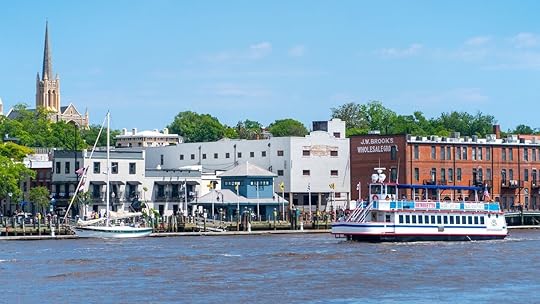
Leave the daily grind at home and treat yourself to a grownup good time in Wilmington, NC, and its beaches this fall. Whether you’re looking forward to a solo getaway, a trip sans kids, a romantic retreat, a retirement adventure, or a friend meetup, this is an ideal destination for mixing the sun and sea with historic charm, coastal cuisine, and city sightseeing year-round — especially after Labor Day, when kids are back in school. Dive into live tunes by the water, ride the waves on scenic cruises, dig into authentic history and culture, and savor coastal eats all on one trip.
So get ready to unleash your inner explorer — with a historic riverfront city and three beaches at your doorstep, Wilmington is where it’s at this fall. Here’s why.
1. There’s no shortage of live entertainment.
Photo: Wilmington and Beaches
Fancy a night out with a concert or live music? In Wilmington and its island beaches, there’s no shortage of shows on any given night. Live Nation brings in big-name acts like Maggie Rogers and Widespread Panic at Live Oak Bank Pavilion at Riverfront Park, where picturesque river views serve as the venue’s backdrop.
If you’re not looking to commit to a full-on show, pop by one of the area’s many bars and restaurants with live music. You can’t go wrong at the Reel Café, offering oysters and rooftop river views. Bourgie Nights features talented traveling singers, songwriters, and local musicians — it’s operated by the restaurant next door manna ave. 123, whose award-winning fine dining and basement cave of wine treasures make for an elevated date night. Or try Satellite Bar and Lounge, where craft beers and bluegrass jams flow amid the salvage-decor ornamenting the 1940s grocery store building it calls home.
And if you want to laugh until you cry, grab your travel companions and head to Dead Crow Comedy Room, Eastern North Carolina’s only full-time comedy club, for nationally acclaimed acts. Bonus: The venue’s spacious and lively beer garden is perfect for a cold pint.
2. Wilmington’s food and bar scene rivals that of much larger cities.
Photo: Wilmington and Beaches
Feast on James Beard foodie favorites.Wilmington has become one of the South’s most popular dining destinations, home to an abundance of notable chefs and foodie favorites. Chef Keith Rhodes (owner of Catch, James Beard Foundation semifinalist for Best Chef: Southeast, and “Top Chef” season 9 alum) is known for fresh, sustainable, and innovative seafood dishes like his grouper and shrimp and grits. Get a sense of place at Seabird, helmed by Chef Dean Neff, a James Beard Foundation Best Chef: Southeast semifinalist who turns to the local waterways for every sea-inspired creation that hits the menu. His seafood tower is an instant crowd-pleaser, often filled with local oysters and clams foraged by hand.
Pizza at the coast? Yes, please! Chef Vivian Howard, a James Beard Foundation Best Chef: Southeast semifinalist, owns Benny’s Big Time Pizzeria. Take a break from fresh seafood and gorge on the heavenly Southern fried chicken parm and a Tony pepperoni pizza. And this just in: Chef Sunny Gerhart, a James Beard Foundation semifinalist for Best Chef: Southeast who runs the acclaimed restaurant St. Roch in Raleigh, recently opened Olivero (think Spanish and Italian influences on New Orleans-style cuisine).
Dine outdoors with an Instagrammable view.There are so many al fresco dining options with spectacular views — and fresh seafood by the water is a classic, delicious choice for any visit to the area. At Carolina Beach, get your surf (seafood) at The Ocean Grill & Tiki Bar and turf (all the burgers and barbecue) at Carolina Smokehouse, as featured on Food Network. Or dock and dine at Stoked Restaurant and enjoy oysters, peel ‘n’ eat shrimp, and a delicious island poke bowl.
In Wrightsville Beach? Head over to Bluewater Waterfront Grill for an iconic marina sunset or Oceanic Restaurant for an elevated dining experience on a pier overlooking the ocean. Also in the area, Dockside Restaurant has a relaxed ambiance along with its mouthwatering seafood, while South Beach Grill offers fresh-to-table chalkboard specials and a dog-friendly patio overlooking the soundside channel.
On downtown’s vibrant Riverwalk, meanwhile, you can grab a table with friends (or for a date night) at Elijah’s Restaurant, The George, or Pilot House. Located on the north end of the Riverwalk at Port City Marina, Marina Grill is excellent for Sunday brunch (the crab cake Benedict and Davie County burger are not to be missed). And don’t forget Floriana, situated across from the Riverwalk with balcony seating, where you’ll be transported to Northern Italy as you nosh on gnocchi, ravioli, and tortellini made with seasonal ingredients.
Toast to the coast.
Photo: Wilmington and Beaches
Wilmington also has an amazing craft cocktail scene. Check out a happening rooftop (such as Cloud 9, with sweeping views of the Cape Fear River and historic downtown), or perhaps Whiskey Tango Foxtrot, a whiskey-forward bar, is calling your name (don’t fret, there are libations sans whiskey for any in your party whose tastes differ). You can also step back in time at The Blind Elephant, a 1920s-themed Prohibition speakeasy hidden in an alleyway.
Sips, suds, and sun!Beer enthusiasts will enjoy the self-guided Wilmington Ale Trail, stocked with sips from Bowstring to Edward Teach and everywhere in between. If the trail isn’t your speed, there are more than 20 breweries to seek out at your own pace. Here are a few recommendations:
Good Hops Brewing, handily located in front of Trinity Disc Golf CourseWaterline Brewing Co., where you can sip with Wilmington’s iconic Cape Fear Memorial Bridge as your backdropWrightsville Beach Brewery, pairing stellar brews with fresh local seafoodFlytrap Brewing, paying homage to the Venus flytrap, a carnivorous plant whose only native habitat in the world is found within a 60-mile radius of WilmingtonMad Mole Brewing, run on solar power!You can even work off those brews with a physical activity while enjoying an ale or two, like Wilmington Bike & Brew Tours or BrewBoat Wilmington. And if you’re in the area in October, Voracious Rare Beer & Wine Festival is a favorite among beer fans.
3. Get to know the area by foot or on the water.
Photo: Wilmington and Beaches
Hoof it…After all the eating (and drinking), you’ll need to get moving. Historic downtown’s Riverwalk will keep you stepping with its 2-mile stretch of access to boutiques, riverside eats, and the allure of the Cape Fear River, including the not-to-miss Battleship NORTH CAROLINA anchoring the opposite bank. Historic charm unfolds in Wilmington’s National Register Historic District, home to Bellamy Mansion, Burgwin-Wright House and Gardens, and Latimer House museums. In October, Riverfest, a celebration of downtown’s history, is a favorite among both locals and travelers.
Journey on foot into nature via Carolina Beach State Park’s Sugarloaf Trail or Fort Fisher State Recreation Area’s Basin Trail in Kure Beach. The striking beauty of Wilmington’s Airlie Gardens captivates with its carefully manicured grounds and trails, wildlife, and ancient Airlie Oak. Or stroll to a spot like Harbor Way Gardens in Wrightsville Beach and savor a curated picnic by Seaside Charcuterie.
…or cruise it.To really get a taste of local culture, hit Wrightsville Beach’s crystal blue waters with Soundside Adventures for an island-hopping cruise to a barrier island like Masonboro Island Reserve. If you brought a whole crew of friends, Soundside’s new 44-foot catamaran accommodates larger groups. Epic Excursions offers island excursions for everyone in your party, including customizable private half- and full-day boat charters. Expect sporty activities like SUP-ing or even a culinary adventure to a private catered seafood-boil dinner on Masonboro Island.
4. Then rest your head at a B&B or oceanfront hotel.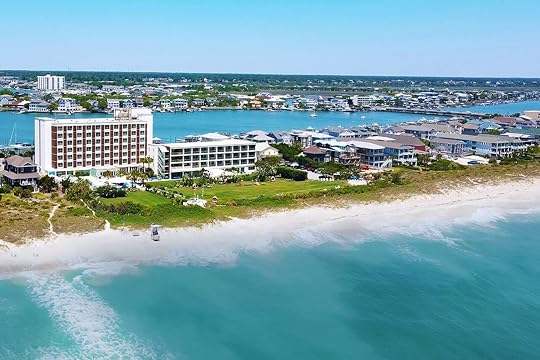
Photo: Wilmington and Beaches
Wilmington has lodging options for every type of traveler and trip. ARRIVE Wilmington caters to the chic, mid-century modern hotel seeker (its beautiful Gazebo Bar is a real hotspot). Indulge at The Hive, a newer boutique hotel with all the charm, or get cozy at C.W. Worth House Bed & Breakfast, an award-winning Victorian B&B. DREAMERS by DW, meanwhile, delivers unique vibes with on-site yoga lessons and a mouthwatering vegan breakfast.
For water views, Blockade Runner Beach Resort, sitting oceanfront on Wrightsville Beach, offers surf-to-sound amenities. Then there’s the Courtyard Marriott Carolina Beach Oceanfront, just steps from both the sea and the vintage Carolina Beach Boardwalk. If traveling with the squad, The Cottage at Blockade Runner accommodates up to 26 guests, or check out Lumina, a Holiday Inn Resort and some of the area’s gorgeous oceanfront vacation rentals.
With a genuine beach atmosphere and historic city to explore, Wilmington and its three island beaches have so much going on that no two trips are ever the same. This fall, come find your own ideal getaway and explore Wilmington’s unique take on Carolina charm. 
September 6, 2023
This Boston Museum Has Two Movie Theaters and a Planetarium With a 57-Foot-Tall Dome

If you’ve always dreamed of seeing the planets, moons, asteroids, comets, and meteoroids that make up our solar systems up close, no need to jump into a rocket ship just yet — visit the Museum of Science in Boston first. The MOS is equipped with a spectacular 57-foot-tall dome that will take you on a trip to outer space that you won’t soon forget. But while the Charles Hayden Planetarium is the highlight of the MOS, the museum is not only about space. There’s also a dinosaur exhibit, a lab where you can witness a mad-man lighting storm, an insect zoo, a human biology exhibit, and many more displays and presentations that will leave you a cleverer human when you finally step out of this incredible museum.
Where is the at the Museum of Science in Boston and how to get there?Parking at the Museum of Science in BostonHours of operation at the Museum of Science in BostonTickets for the Boston Museum of ScienceMembership for the Boston Museum of ScienceMap and exhibits at the Museum of Science in BostonIs there a planetarium at the Boston Museum of Science?Is there an IMAX® film at the Boston Museum of Science?Is there a gift shop at the Boston Museum of Science?Is there a restaurant at the Boston Museum of Science?Can you get married at the Boston Museum of Science?Duck Tours from the Boston Museum of ScienceHotels near the Boston Museum of ScienceWhere is the at the Museum of Science in Boston and how to get there?The museum is located in the West End neighborhood of the city, in an area called Science Park. It is 25 minutes on foot from Old North Church, the oldest standing church in Boston, and a 23-minute walk away from Boston Common, the oldest city park in the US.
The exact address of the Boston MOS is: Museum Of Science Driveway, Boston, MA 02114, United States
If you want to avoid the city traffic, the easiest way to get to the museum is by using the subway. The subway station “Science Park/West End”, located four minutes on foot from the entrance to the museum, is serviced by branch E of the Green Line (GLE). The Green Line easily connects with the Orange Line, and Red Line that serve downtown, and with the Blue Line that serves Logan International Airport. Consult Boston’s subway map to plan your journey.
Parking at the Museum of Science in BostonThe Boston MOS has its own garage open from 5 AM to midnight daily (no entry after 11 PM from Sunday to Thursday.)
Fees for parking in the Museum Garage start at $15 for one hour and increases the longer you stay. Payment can only be done with a debit or credit card.
If the Museum Garage is full or if you want a cheaper option, park in the garage of the CambridgeSide shopping mall, less than 10 minutes away on foot.
Hours of operation at the Museum of Science in BostonThe Boston MOS is open from 9 AM to 5 PM seven days per week.
Various films, shows, and presentations are scheduled throughout the day. Please check the daily schedule on the museum’s website so you don’t miss any on planetarium shows, 4-D films, and more.
Tickets for the Boston Museum of ScienceTickets for the Boston MOS must be purchased online in advance to secure your visit.
Admission to the museum is $29 for adults; $24 for children aged between three and 11; $23 for seniors over the age of 60. Children under the age of three enter for free.
If you want to add a planetarium show or a movie viewing to your day at the museum, you’ll need to pay $6 extra and book in advance to secure your spot.
Those who wish to enter the museum only to catch a planetarium show or a movie can do so by booking a seat online in advance. Adults pay $10; children between the ages of three and 11 pay $8; seniors pay $9. Children under the age of three enter for free.
Membership for the Boston Museum of ScienceMembers of the Boston MOS enter the museum for free and get discounts on planetarium shows and movies, as well as at the parking garage, the gift shop, and the museum café.
There are various membership plans to suit all visitors’ needs, starting at $100 for one member and one guest. All memberships lasts one full year.
Map and exhibits at the Museum of Science in BostonThe Boston MOS is spread over three levels and three wings: the blue wing, the green wing, and the red wing. Permanent exhibits include an insect zoo, a hall dedicated to human biology, an area that focuses on mathematics, one that is devoted to dinosaurs, a live animal care center, and more. There are also two movie theaters and a planetarium. The Boston MOS also hosts traveling exhibits throughout the year.
Check out the museum map for a better look at the permanent exhibits that interest you the most and where they are located.
Is there a planetarium at the Boston Museum of Science?The museum is home to the Charles Hayden Planetarium (and its 57-foot dome), located in the red wing on level one. Several planetarium shows are scheduled daily with a variety of themes, including “Destination Mars: The New Frontier”, “God, Science, and our Search for Meaning”, “Moons: Worlds of Mysteries”, and more.
Is there an IMAX® movie theater at the Boston Museum of Science?The museum has two movie theaters: the 4-D theater for viewing 4-D movies, and the Mugar Omni Theater where you can view IMAX® films. There is a large variety of IMAX® films projected throughout the day, including “Jane Goodall: Reasons for Hope”, “Everest”, “Serengeti”, and many more.
Is there a gift shop at the Boston Museum of Science?The Museum Store is located in the red wing of the museum, on level one, across from the Riverview Café. The Museum Store is open daily.
Is there a restaurant at the Museum of Science?The museum is home to the Riverview Café, located in the red wing, on level one. A variety of food is on offer, including hot beverages, baked goods, sandwiches, pizzas, burgers, etc.
Visitors are allowed to bring their own food, but cannot consume it in the café or in the exhibition halls. Instead, they may use the picnic tables behind the museum, or sit in the Atrium, also located in the red wing, on level one.
If you’d rather enjoy a meal outside of the museum, check out Matador’s selection of nine surprising and delightful Boston restaurants for Italian food, sushi, and more.
Can you get married at the Boston Museum of Science?Yes, you can host a private event, including a wedding with between 100 and 250 guests, at the museum. There are several indoor and outdoor reception areas on offer and your wedding guests even get tickets to visit the museum.
Duck Tours from the Boston MOSBoston Duck Tours start from the entrance of the museum. Tours take place daily and depart on the hour, starting at 10 AM until one hour before sunset. All tours last around 80 minutes. Tickets are available for purchase online or at the ticket booth located by the entrance of the museum.
Hotels near the Boston Museum of ScienceIf you’re looking for a rental, check out Matador’s list of the best Airbnbs in Boston. if not, take a look at Matador’s selection of fine Boston hotels near all the must-see attractions. 
We hope you love the hotels we recommend! Just so you know, Matador may collect a small commission from the links on this page if you decide to book a stay. Listed prices are accurate as of the time of publication.
More like thisTravelThis Giant Boston Museum Has the Largest Collection of Monet Paintings Outside of FranceWhere To Eat, Play, and Stay in Chattanooga

Surrounded by the Appalachian Mountains and Cumberland Plateau, Chattanooga is a haven for outdoor enthusiasts with plenty of hikes and bouldering spots within an hour’s drive. Not to mention the gorgeous Tennessee River that runs through downtown, offering a variety of watersports activities. Over the past decade, the word has gotten out about Chattanooga for more than just outdoor enthusiasts, too, with a mix of restaurants, attractions, and accommodations that have made the city and surrounding area one of the coolest weekend getaways in the country.
Can’t-miss things to do in ChattanoogaTennessee Aquarium
Photo: Matthew G Eddy/Shutterstock
Animal lovers will not want to miss the Tennessee Aquarium. Start off with the freshwater exhibits in the River Journey Building, which focuses on the freshwater ecosystems of the southeastern United States. Be sure to check out the river monsters exhibit, which feature some of the world’s largest river fish. While Chattanooga may be far from the sea, experiencing the Atlantic and Pacific marine ecosystems is not thanks to the aquariums ocean Journey building. Aside from sealife, you’ll always find some lemurs hanging around. Before you leave, check out the butterfly garden, which is home to more than 1,000 butterflies.
Tennessee Aquarium: 1 Broad St, Chattanooga, TN 37402
Reflection Riding Arboretum and Nature CenterView this post on InstagramA post shared by Reflection Riding (@reflectionriding)
This 317-acre center is the perfect place to relax and connect with nature. The arboretum features over 1,000 different types of trees and plants, including some rare and endangered species. Take a stroll on one of the 15 miles of trails which take you around the lake and through the property. Be sure to explore the treehouse built over the wetlands then explore the lake on a canoe.
Reflection Riding Arboretum and Nature Center: 400 Garden Rd, Chattanooga, TN 37419
Foster Falls
Photo: shaynaelisabeth/Shutterstock
Foster falls is a short 45 minutes north west of Chattanooga. This 60-foot waterfall is an impressive one. Just a short walk from the parking lot is a platform that offers a stunning view of the waterfall. If you’re up for a little longer of a hike, follow the trail 0.3 miles down to the base of the waterfall. Here, you’ll have gorgeous views of this waterfall up close. This is a great hike year-round, though in the summer go in the morning or late afternoon to escape the heat.
Foster Falls: 498 Foster Falls Rd, Sequatchie, TN 37374
Incline Railway
Photo: JNix/Shutterstock
Incline Railway is one the steepest passenger railways in the world, with a 72.7 percent incline grade toward the top. The ride alone is noteworthy after grabbing tickets at the bottom. Then at the end of the line, you can grab ice cream or fudge and take the stairs to the top of the station for incredible views of Chattanooga.
Incline Railway: 3917 St Elmo Ave, Chattanooga, TN 37409
Rock City Garden
Photo: Ritu Manoj Jethani/Shutterstock
Just six miles from downtown, Rock City Garden is not to be missed. The foot path takes you past a number of sights, including Lover Leap, a dramatic cliff with views of seven states; Rainbow Falls, a 170-foot waterfall cascading down the mountainside; and Fairyland Caverns, a magical cave filled with life-size sculptures of nursery rhyme characters. If possible, visit on a weekday to miss the crowds and be sure to buy your tickets online.
Rock City Garden: 1400 Patten Rd, Lookout Mountain, GA 30750
Ruby Falls
Photo: Bok David/Shutterstock
Ruby Falls is the tallest and deepest underground waterfall in the US — and you can get far more up close and personal than many falls elsewhere in the country. Here, you can descend 260 feet into the cavern by elevator, then take a short 0.4 mile walk through the cave to reach the waterfall. Included in your ticket is access to Lookout Tower, which offers incredible views of the city.
Ruby Falls: 1720 S Scenic Hwy, Chattanooga, TN 37409
Sculpture Garden
Photo: Marcus E Jones/Shutterstock
The 33-acre Sculpture Fields at Montague Park is home to over 50 large-scale sculptures from a number of artists. The park is free to visit and guests are welcome to wander around and explore the park at their own pace. This makes it a great place to get some steps in and fresh air while taking in some art.
Sculpture Garden: 1800 Polk St, Chattanooga, TN 37408
Sunday MarketView this post on InstagramA post shared by Chattanooga Market (@chattamarket)
Located in the First Horizon Pavilion with over 150 vendors each weekend, the Sunday Market is a must visit. You’ll find all sorts of vendors, from food trucks and fresh produce to jewelry and local art. The market is open every Sunday April through November from 11:00 AM to 4:00 PM.
Chattanooga Market: 1801 Reggie White Blvd, Chattanooga, TN 37408
Where to eat and drink in ChattanoogaFrothy MonkeyView this post on InstagramA post shared by FROTHY MONKEY (@frothymonkey)
Located in the Choo Choo complex, stop in the Frothy Monkey for some delicious coffee and pastries. If you’re not in a hurry, eat in for breakfast and enjoy the vibes. The Frothy Monkey is open seven days a week from 7:00 AM to 9:00 PM and offers rotating events throughout the year.
Frothy Monkey: 1400 Market St, Chattanooga, TN 37402
Milk and HoneyView this post on InstagramA post shared by Milk & Honey Chattanooga (@milkandhoneychattanooga)
Located on the North Shore, Milk and Honey serves brunch seven days a week from 6:00 AM to 3:00 PM. It’s not all about brunch food, though, thanks to a full bar and housemade gelato. Don’t miss the chicken and waffles or hot mess biscuit sandwich, and I can’t say enough food things about the vanilla bean latte and liquid gold juice.
Milk and Honey: 135 N Market St, Chattanooga, TN 37405
Big Bad BreakfastView this post on InstagramA post shared by Big Bad Breakfast Chattanooga (@chatt_bigbadbreakfast)
If you’re looking for a good Southern breakfast, head to Big Bad Breakfast, which has two locations: one on the southside and one connected to the Lodge Cast Iron Museum. You can’t go wrong with the Cathead Breakfast complete with biscuits, fried chicken, and country gravy.
Big Bad Breakfast: 313 Manufacturers Rd UNIT 119, Chattanooga, TN 37405
Rembrandt Coffee HouseView this post on InstagramA post shared by Bluff View Art District (@bluffviewartdistrict)
For those just looking for a good cup of coffee and pastry, Rembrandts is the place to go. It’s won the best local coffee shop Times Free Press Best of the Best Awards 12 times in a row.
Rembrandt Coffee House: 204 High St, Chattanooga, TN 37403
Mac’s Kitchen and BarView this post on InstagramA post shared by Mac’s Kitchen & Bar (@macs_kitchenandbar)
This farm-first restaurant focuses on new Southern cuisine where the food is made from scratch in house or by vendors that share the restaurant’s values. The menu is arranged by type: Foraged (think mushrooms over grits), Garden (okra, squash, cornbread, and seasonal produce), and Land (chicken, trout, and chorizo). Before grabbing dinner, first head to the meadery Flora de Mel, which is connected to the restaurant. A pre-dinner tasting is the perfect start before settling in for a delicious dinner focused on locally sourced produce. The plates are served family style, so order a few different plates to share and taste.
Mac’s Kitchen and Bar: 313 McFarland Ave, Rossville, GA 30741
Flying SquirrelView this post on InstagramA post shared by Flying Squirrel Bar (@squirrelbar)
if you’re looking for good vibes and good food, head over to the Flying Squirrel for dinner. The vibe is very laid back, with a large outdoor patio to embrace nice weather and fresh air. Reservations are recommended, especially on the weekend. The food is served as shared plates, so bring a group and order a variety of dishes — it’s hard to go wrong regardless of the order.
Flying Squirrel: 55 Johnson St, Chattanooga, TN 37408
Tony’s Pasta Shop and TrattoriaView this post on InstagramA post shared by Bluff View Art District (@bluffviewartdistrict)
If you’re in the mood for handmade pasta, Tony’s is the place to go. The bread is made fresh daily as well, and is so good that you’ll want to eat a whole loaf yourself. If you’re in the mood for a specific pasta you can design your own by choosing from a variety of pastas, sauces, and proteins.
Tony’s Pasta Shop and Trattoria: 212 High St, Chattanooga, TN 37403
Easy BistroView this post on InstagramA post shared by Easy Bistro & Bar (@easybistro)
For a high end dining experience head to Easy Bistro, located in the new and trendy West Village at the city center. The menu features dishes made with ingredients from local farms. If you’re a seafood lover, be sure to stop by during happy hour from 4:00 to 5:00 PM everyday for buy one, get one free oysters.
Easy Bistro: 801 Chestnut St, Chattanooga, TN 37402
Where to stay in ChattanoogaThere are a range of enticing Airbnbs in Chattanooga, but if you’re looking for a hotel, there are a variety of options depending on the amenities you’re looking for.
We hope you love the spaces we recommend! Just so you know, Matador may collect a small commission from the links on this page if you decide to book a stay.
Kinley Hotel Chattanooga
Photo: Expedia
Located on the Southside of Chattanooga, the Kinley is a great homebase for adventuring during the day and exploring the area at night. Throughout the hotel, you’ll notice paintings, weaverings, and prints designed by Chattanooga’s women artists. If you find one you’d like to own, they are available for purchase. The rooms vary from a single king bed for the solo or couple, to queen bunk beds for the family travelers. At the lobby bar, the Exchange, you can grab breakfast and some coffee or an evening cocktail. Be sure to seek out the hidden speakeasy-style bar, Company, to grab a tasty cocktail and apps.
The Crashpad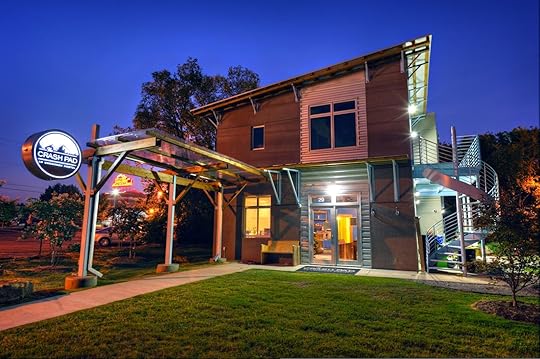
Photo: Expedia
This is the perfect stay for adventurers looking for a budget friendly spot to crash. Geared toward hikers, climbers, and outdoor lovers, the Crashpad offer semi-private and private rooms, depending on what you’re looking for. The hostel was designed using reclaimed and renewable resources in order to minimize its impact on the environment, and is the first hostel in the world to be LEED Platinum Certified. The hostel also offers beautiful common areas and a large outdoor patio with a fire pit to meet your fellow adventure lovers.
Treetop HideawaysView this post on InstagramA post shared by Treetop Hideaways (@treetophideaways)
If you’re looking for a peaceful escape from the city, Treetop Hideaways is the perfect option. Located just minutes from Ruby Falls and 20 minutes from downtown Chattanooga, these cabins are in the perfect location to disconnect. The cabins can sleep up to four guests and is complete with a kitchenette, indoor bathroom and outdoor shower, a fire pit, and all the supplies you need for a campfire.
How to Get to ChattanoogaChattanooga’s regional airport is the easiest way to get into town if you’re out of driving distance, though you can also fly to larger nearby airports in Knoxville, Nashville, or Atlanta and rent a car.
Once there, Chattanooga is very walkable and offers a free electric shuttle (the Carta) that runs from the Chattanooga Choo Choo on the southside to the Tennessee Aquarium on the northshore. If you are planning to venture out of the city for hiking and adventuring then renting a car will be your best option. 
This Secluded Southern California Health Spa Feels Like an Elegant European Retreat

Embarking on a trip to Cal-a-Vie Health Spa in Vista, just north of San Diego, feels like visiting a French Provencal-style retreat. It’s nestled into 500 acres of scenic rolling California hillside like a well-being-focused cocoon, hidden away from the stresses of city life – and that’s its entire mission.
This intimate, 32-room resort combines European spa philosophies with California concepts of fitness, health, and nutrition, perfecting the balance of being relaxed — while never feeling deprived. The result is a perfectly rare original take on San Diego lodging.
Cal-a-Vie offers a range of packages that include food, spa treatments, wellness programming like meditations and lectures, and private upscale accommodations.
The week before arrival, someone from the property will reach out to each incoming guest and send over a survey asking what kind of experience they want during their stay. Whether it’s focusing on weight loss, fitness, nutrition, or mental well-being, each and every need can be accommodated. The team will then build a customized activity schedule for each guest every day based on their goals.
I visited the property on a “La Petite Package 3-night stay” package ($5.750), which included three meals per day, unlimited fitness classes, five spa services, a cooking demonstration, and access to wellness and nutrition seminars. If I were flying in, it also would’ve included roundtrip transportation to and from San Diego International Airport. Other packages include more or less, but this one is well-balanced and still offered plenty of downtime. Those who stay longer can immerse themselves deeper into the experience, but three days was a solid amount of time to familiarize myself with the property and its practices.
When I arrived, immediately upon climbing the grand steps and into the lobby, I felt like the health spa radiated an extremely luxurious but also impressively unpretentious atmosphere. I appreciated how everyone I encountered on-site, both guests and employees, seemed to be inexplicably naturally happy — but then, I realized I shouldn’t be surprised as we were surrounded by stunning, dopamine-inspiring landscapes basked in sunshine.
It was a perfect combination of elegance in the French decor and architecture, surrounded on the outside by iconic Southern California weather with acres of picturesque vineyards and rolling hills.
A (Flexible) daily schedule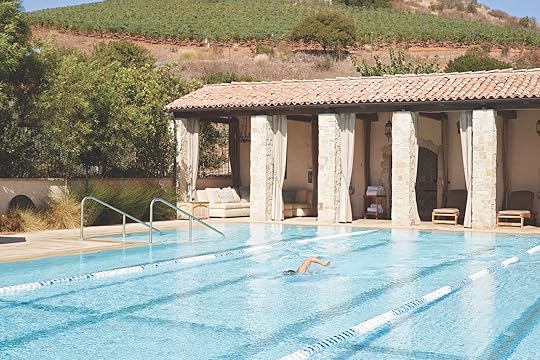
Photo courtesy of Cal-a-Vie Health Spa
Each morning during breakfast, guests receive their individualized schedules for the day based on the questions they answered before check-in, which include a lineup of fitness classes, spa treatments, and wellness and meditation offerings.
The higher-intensity fitness classes like spin and barre tend to be in the morning, followed by a break during lunch and the option to attend an educational seminar after lunch. Then the rest of the day is usually taken up by scheduled spa treatments and other wellness classes like meditation and yoga.
You can choose to stick strictly to your schedule and take those classes you’ve been “assigned,” or if you’re more interested in one of the other classes being offered during the same time, you can hop into that one instead — it’s very flexible.
Nutrition is priority number one
Photo courtesy of Cal-a-Vie Health Spa
In between exercising and spa treatments, guests are fed three nutritional, thoughtfully planned meals. The executive chef and the on-site registered dietitian and nutritionist work together and collaborate to create dishes that are balanced and healthy. The dining team is very accommodating of dietary restrictions and works with guests to create a dietary plan that works for their individual goals.
For breakfast, I chose between a set lineup of healthy options, like oatmeal with egg whites and spinach or a turkey sausage omelet. Lunch and dinner were different each day, and were a surprise until the day’s menu was put out in the dining room during breakfast. Some examples of lunch and dinner included miso-glazed Chilean sea bass with a side of cauliflower rice and edamame or New York Strip Vera Cruz with a side of fingerling potatoes and broccolini.
Something that caught me off guard is that every lunch and dinner meal comes with (a healthy) dessert like chocolate avocado mousse or green tea sorbet with blueberries. You certainly won’t go hungry and my sweet tooth was always satisfied.
And since this property focuses heavily on balance and learning to nourish the body instead of denying it, on Friday evenings, there’s a hosted wine tasting at the Parish House, which is perched up on one of the hills overlooking the property, followed by a cooking demonstration with the chef who will teach guests how to make a tasty and nutritious meal (with a recipe book for guests to take and replicate the evening at home).
Throughout the day, if you’re still hungry (which can happen when you’re doing a spin class followed by a yoga class followed by a barre class), you can order a snack to your room. There are multiple healthy snack choices, including fruit, gluten-free cookies, and seasoned popcorn.
The property actually makes fitness fun
Photo courtesy of Cal-a-Vie Health Spa
Each morning, there’s a group “hike” and a morning “walk” at 6:30 a.m., led by on-site experts. The tranquil guided group hikes feel like a solid workout — and features a variety of terrain, depending on the day, with varying steepness. Trekkers will explore different routes on the 10 miles of trails scattered throughout the property’s spacious 300 acres.
The hikes range from roughly 2.5 miles to four miles in length. There’s also a morning walk, which is less intense and covers roughly two or three miles of ground through the golf course or neighborhood surrounding the area. It’s still a solid workout with less loose gravel and more solid ground.
Both of these activities feel like a great way to start the day by getting out into nature, getting the endorphins flowing and enjoying some social interaction.
I embarked on the group hike, and even though it was initially tough to set a 6 a.m. alarm, once I got to the meeting point where the guides had coffee waiting for us with a side of sunny enthusiasm, it was worth it.
In addition to the nature hikes, there are more than 160 group fitness classes hosted on-site, and each day there’s a different lineup of classes. Some of my favorite classes I got to experience were trapeze yoga, spinning, vinyasa yoga, and barre — but other cool classes on the schedule I would’ve hopped into if I’d had more time, like “face yoga,” and belly dancing. There’s also a set of low-resistance aquatics classes offered in one of the property’s two pools like “Poolates” (like Pilates — but in a pool) and Aqua jogging.
Those who want a private session can sign up for their own personal one-on-one class. And those who are especially interested in learning more about their body composition or recovery time can set up a fitness assessment for an extra fee — the resort boasts technology like the Bod Pod, metabolic rate testing, 3D body scans, and even cryotherapy sessions.
In addition to the group classes, there are multiple tennis and pickleball courts to play on. And the an adjoining Vista Valley Country Club hosts an 18-hole golf course that has the same French Provencal feeling as Cal-a-Vie Health Spa, including a lineup of antiques. Cal-a-Vie guests can sign up for golf experiences for an extra fee.
Mindfulness meditations and contemplations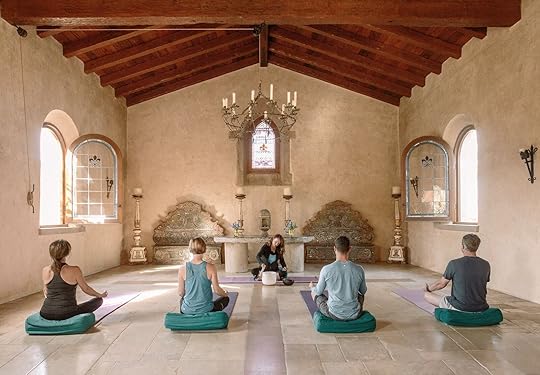
Photo courtesy of Cal-a-Vie Health Spa
This property realizes health isn’t just about proper fitness and nutrition — it’s also about taking care of the mind and the spirit. There are nearly two dozen types of yoga classes offered on-site and various meditation classes aimed at focusing on breathwork and achieving balance.
There’s a labyrinth for those who want a space for quiet reflection, guided pranayama classes to learn how to calm the mind and focus, and crystal sound baths for deep relaxation and inner healing. There’s also a high-tech observatory on-site, which welcomes guest presenters to teach guests about the daytime and nighttime sky.
Those who want an acupuncture treatment can do so for an extra fee or try any of the “wellness injections” like “The Energizer Bunny,” which boosts the body with a double dose of B vitamins, or the “Stress ‘B’ Gone,” which combats the effects of stress.
For my mindfulness experiences, I enjoyed taking the “5 Love Languages” class, which helped me and my significant other learn about each other’s love languages and how to be better partners. I also enjoyed the “Love Letter Meditation” experience, where we wrote a love letter to anyone in our lives who needed it (including ourselves, if that was who needed some extra love) and actually had us mail it to that person from the property.
Rest, recuperation and reflexologyAfter a morning of working out the body and mind, it’s time to enjoy the spa. The spa is a stunning recreation of a European bathhouse, outfitted with relaxing lounge chairs, plenty of tea, and natural light streaming in through the windows of the community waiting room.
There are dozens of different types of spa treatments ranging from massages to facials, reflexology, and many more unique self-care services. One special experience the property hosts is Vinotherapie — a product line and set of treatments formulated with extracts from the spa’s very own harvest of Cabernet Sauvignon, Cabernet Franc, and Merlot grapes. These treatments are dedicated to using the antioxidant-rich derivatives taken directly from the on-site vineyard’s wine-making process like grape skins, seeds, and pulp — all of which contain numerous elements to enhance skin and health, like vitamins C and E to strengthen collagen and increase elasticity and firmness.
In addition to the spa, there’s a dedicated salon with treatments ranging from hair to scalp, brow, and lash services and nail polish touch-ups. What impressed me most is the unfathomable amount of technology this property has to offer unique wellness treatments, like LED light therapy, Oxygen Infusion treatments, which rejuvenate the skin and reduce lines, and even eyelash extensions and teeth whitening.
For an extra fee, guests can also have extra blood tests done on-site to determine food sensitivities or hormonal imbalances. The registered dietitian will go through the results and help process the findings, as well as create a plan to heal the body (whether that’s dietary modifications or trying to eliminate common toxins from everyday life like ingredients used in cheap sunscreen or plastic bags).
Sleep like a queen
Photo courtesy of Cal-a-Vie Health Spa
After a full day of exercise, eating, and spa treatments, guests retire to relax in one of the 32 spacious, French-inspired private villas outfitted with a cozy king-sized bed (which certainly feels fit for royalty).
There are no televisions in the villas because it’s meant to be a place to reconnect internally and reflect upon the day — without technology. My favorite part of the guest rooms was actually in the bathrooms, where the towel warmers and soaking tubs felt divine after a day of intense physical activity and deep tissue massaging.
When I first arrived, there was a paper on my bed with a list of each guest’s first name and the destination they came from, so we could get to know each other when we hiked together and sat down at meals together. The social bonds formed in these group settings are also beneficial for personal wellness and feeling fulfilled.
It felt like a transformative experience to be living on-site at Cal-a-Vie. A high percentage of the guests I spoke with were visiting for their second or third time, and came from international destinations as far as Thailand or Germany, or from cities across America like Florida, Arkansas, and New York.
Visiting Cal-a-Vie means having an opportunity to reconnect internally and meet a community of like-minded wellness-oriented people in an environment dedicated to healing.
You take the tools you learned throughout your visit including practicing mindfulness, learning the benefits of an active lifestyle, and cultivating a strong social community — and apply them to everyday life in the outside world (while hoping to someday return). 
Matador Network's Blog
- Matador Network's profile
- 6 followers



